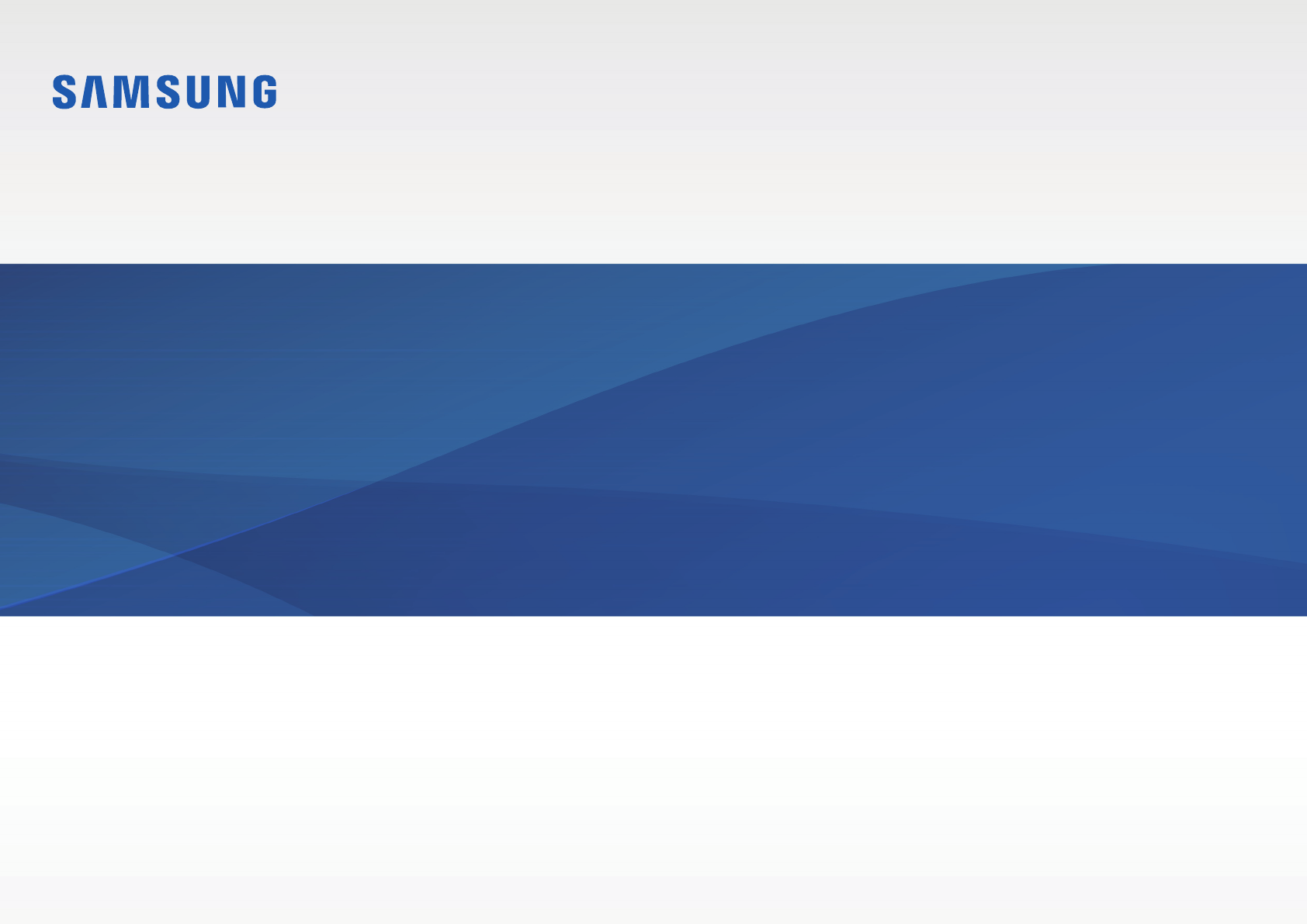Intel 8260D2 Intel Dual Band Wireless-AC 8260 User Manual 1
Intel Mobile Communications Intel Dual Band Wireless-AC 8260 1
Intel >
Contents
- 1. User Manual
- 2. Users Manual
- 3. User Manual 1
- 4. Users Manual 2
- 5. User Manual 2
User Manual 1
2
Getting started
3 About this manual
7 Layout
14 Turning the computer on
and off
16 Unlocking the screen
16 Windows
Basics
19 Using the computer as a
tablet
21 Touch screen (optional)
26 Keyboard
28 Touchpad (optional)
32 Memory card
35 External display
37 Wired LAN
(For 15.6 inch models)
40 Wireless LAN
42 Using the security slot
(For 15.6 inch models)
Applications
43 Using applications
44 Samsung Settings
45 Samsung Update
46 Samsung PC Help (Self-
help application)
Settings & Upgrade
47 LCD brightness
49 Volume
50 BIOS (Setup utility)
56 Battery
Troubleshooting
59 Samsung Recovery
65 Windows recovery
function
65 Q&A
Appendix
69 Product specifications
70 Ergonomic tips
74 Powering your device
76 Safety precautions
89 Important safety
information
92 Replacement parts and
accessories
95 Regulatory compliance
statements
113 WEEE symbol information
115 Samsung package Take-
Back program
Table of contents
3
Getting started
About this manual
•
This user manual is specially designed to detail the computer’s
functions and features.
•
The user manual supplied with the computer may vary
depending on the model.
•
Please read this manual before using the computer to ensure
safe and proper use.
•
Optional accessories, some devices, and software referred to
in this manual may not be provided or may not be subject to
upgrades. Note that the computer environment referred in
the user manual may not be the same as your environment.
•
Descriptions are based on the computer’s default settings
and the Windows 10 operating system. Available features and
additional services may vary depending on the computer or
operating system.
•
This user manual describes procedures for using the
touchpad, mouse and touch screen. Instructions for using the
touch screen are for models with the touch screen feature.
•
Images and screenshots are those of the representative model
of the series and may differ in appearance from the actual
product.
•
Content may differ from the final product and is subject to
change without prior notice. For the latest version of the
manual, refer to the Samsung website, www.samsung.com.

Getting started
4
Copyright
Copyright © 2016 Samsung Electronics
This manual is protected under international copyright laws.
No part of this manual may be reproduced, distributed, translated,
or transmitted in any form or by any means, electronic or
mechanical, including photocopying, recording, or storing in any
information storage and retrieval system, without the prior written
permission of Samsung Electronics.
Computer specifications or the contents of this manual may
be changed without prior notice due to an upgrade of the
computer’s functions.
Instructional icons and expressions
Warning
: situations that could cause injury to yourself or
others
Caution
: situations that could cause damage to the
computer or other equipment
Note
: notes, usage tips, or additional information
The path you should follow to carry out an instruction. For
example, “select
Settings
→
Devices
” indicates that you
should select
Settings
and then
Devices
.
Select Click the mouse or tap the touchpad or touch screen.
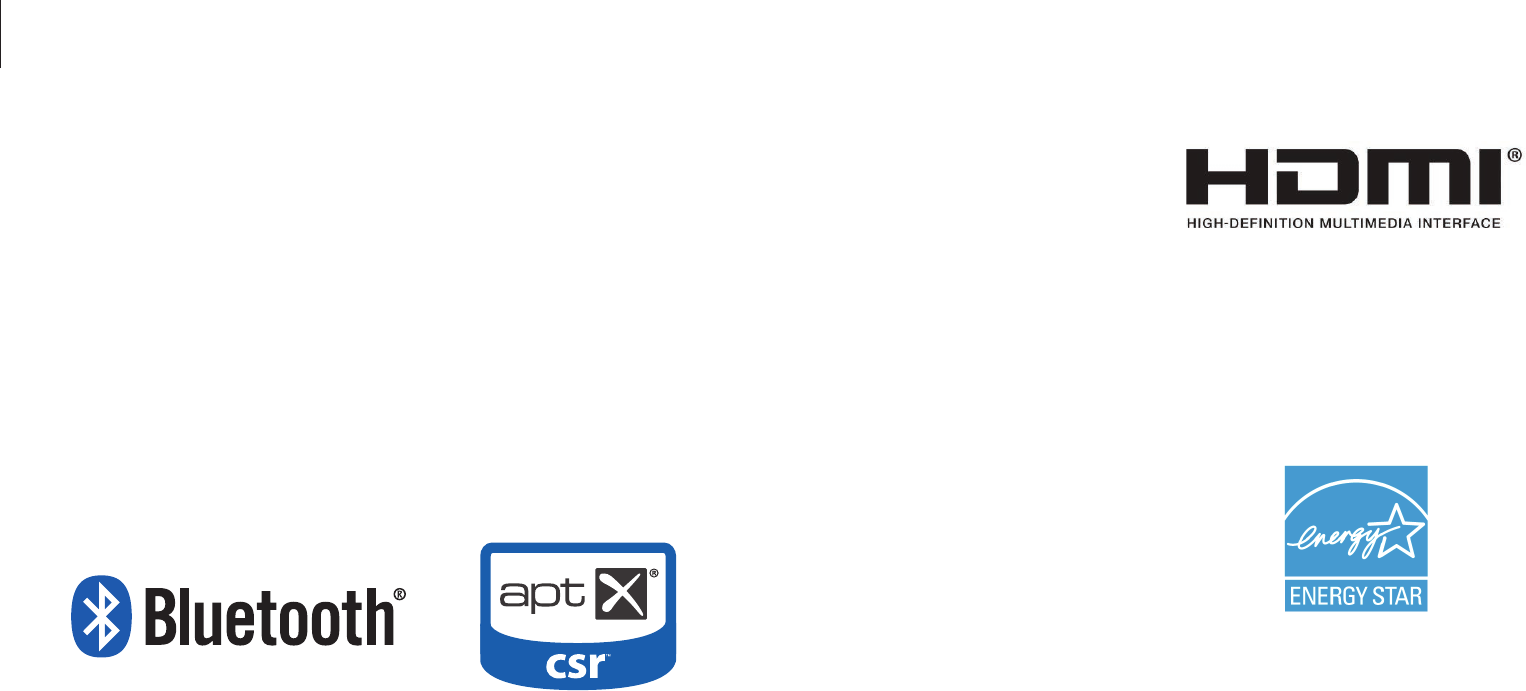
Getting started
5
•
HDMI, the HDMI logo, and
the term High Definition
Multimedia Interface are
trademarks or registered
trademarks of HDMI Licensing
LLC.
•
All other trademarks and copyrights are the property of their
respective owners.
As an ENERGY STAR® Partner,
Samsung has determined that this
product meets the ENERGY STAR®
guidelines for energy efficiency.
•
The ENERGY STAR Program has reduced greenhouse gas
emissions and saved energy through voluntary labeling.
•
Power management setting of this product have been
enabled by default, and have various timing settings from
1 minute to 5 hours.
•
The product can wake with a button press on the chassis from
sleep mode.
Trademarks
•
Samsung and the Samsung logo are trademarks or registered
trademarks of Samsung Electronics.
•
Intel and Core are trademarks or registered trademarks of the
Intel Corporation.
•
Microsoft, MS-DOS, and Windows are trademarks or registered
trademarks of the Microsoft Corporation.
•
Bluetooth® is a registered trademark of Bluetooth SIG, Inc.
worldwide.
•
Wi-Fi®, Wi-Fi Protected Setup™, Wi-Fi Direct™, Wi-Fi
CERTIFIED™, and the Wi-Fi logo are registered trademarks of
the Wi-Fi Alliance.

Getting started
6
Product capacity representation
Storage capacity representation
The capacity of the storage device (HDD, SSD) of the manufacturer
is calculated assuming that 1 KB = 1,000 Bytes.
However, the operating system (Windows) calculates the storage
device capacity assuming that 1 KB = 1,024 Bytes. Therefore, the
available capacity of the HDD in Windows is smaller than the
actual capacity due to the difference in capacity calculation. For
example, for an 80 GB HDD, Windows calculates the capacity as
74.5 GB, (80x1,000x1,000x1,000) Bytes/(1,024x1,024x1,024) Bytes
= 74.505 GB.
In addition, the capacity representation in Windows may be even
smaller because some programs, such as Samsung Recovery, may
reside in a hidden area of the HDD.
Memory capacity representation
The available memory capacity in Windows is less than the actual
capacity of memory. This is because some memory is required for
regular system operations.
For example, for 1 GB (= 1,024 MB) memory installed, Windows
may report the capacity as 1,022 MB or less.
Data precautions
Samsung Electronics shall not be liable for any data loss. Please
take care to avoid losing any important data and back up your
data to prevent any such data loss.
Operating system and software support
If you change the product’s factory OS (Operating System) to
another OS or if you install software which is not supported by the
product’s original factory OS, you will not receive any technical
support, product exchange or refund, and a fee will be charged
when requesting a service.
Please use your computer with the original factory OS. If you
install an OS other than the factory OS, data may be deleted or the
computer may not start.
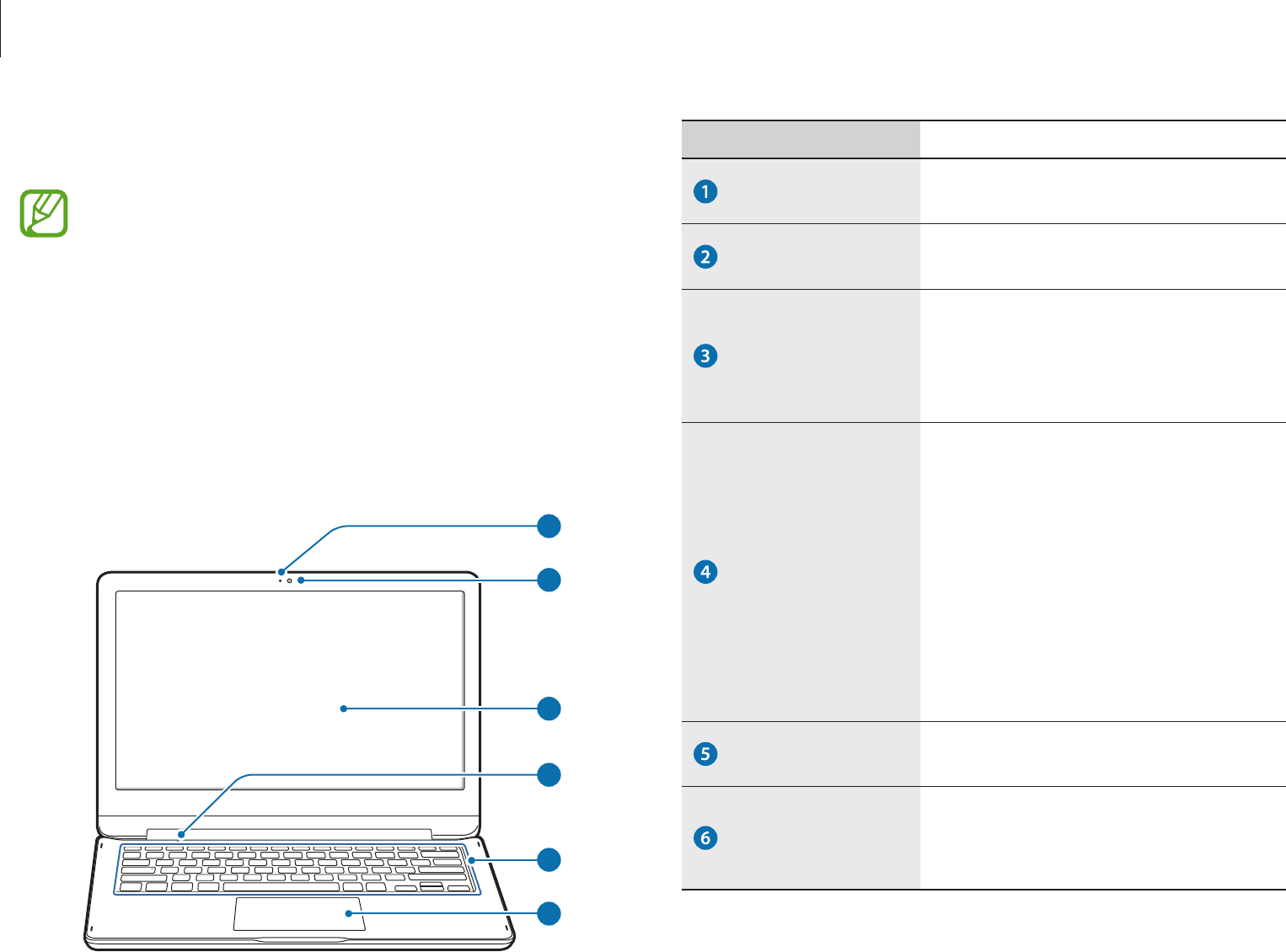
Getting started
7
Number/Name Description
Camera indicator
light
•
This indicates the camera
operating status.
Camera
•
Using this camera, you can take
still pictures and record video.
LCD/Touch screen
(optional)
•
The screen’s images are displayed
here.
•
Recognizes touch interactions
(Only for touch screen models).
Illumination
sensor
•
The sensor detects the ambient
light.
•
If the ambient light level becomes
too low, the keyboard’s backlight
will automatically turn on.
•
If there is sufficient ambient
lighting, the keyboard’s backlight
will automatically turn off.
•
Do not block the sensor.
Keyboard
•
Enter text or control computer
functions.
Touchpad
•
Moves the cursor and selects
options.
•
Functions as a mouse.
Layout
•
Features or options may differ depending on the model.
•
The items marked as optional may not be provided or
may be provided in different locations.
•
Since some space on the SSD is reserved for system
recovery and operations, the available space on the SSD
may be less than the actual capacity.
Front view
▶ For 13.3 inch models
2
1
3
4
5
6
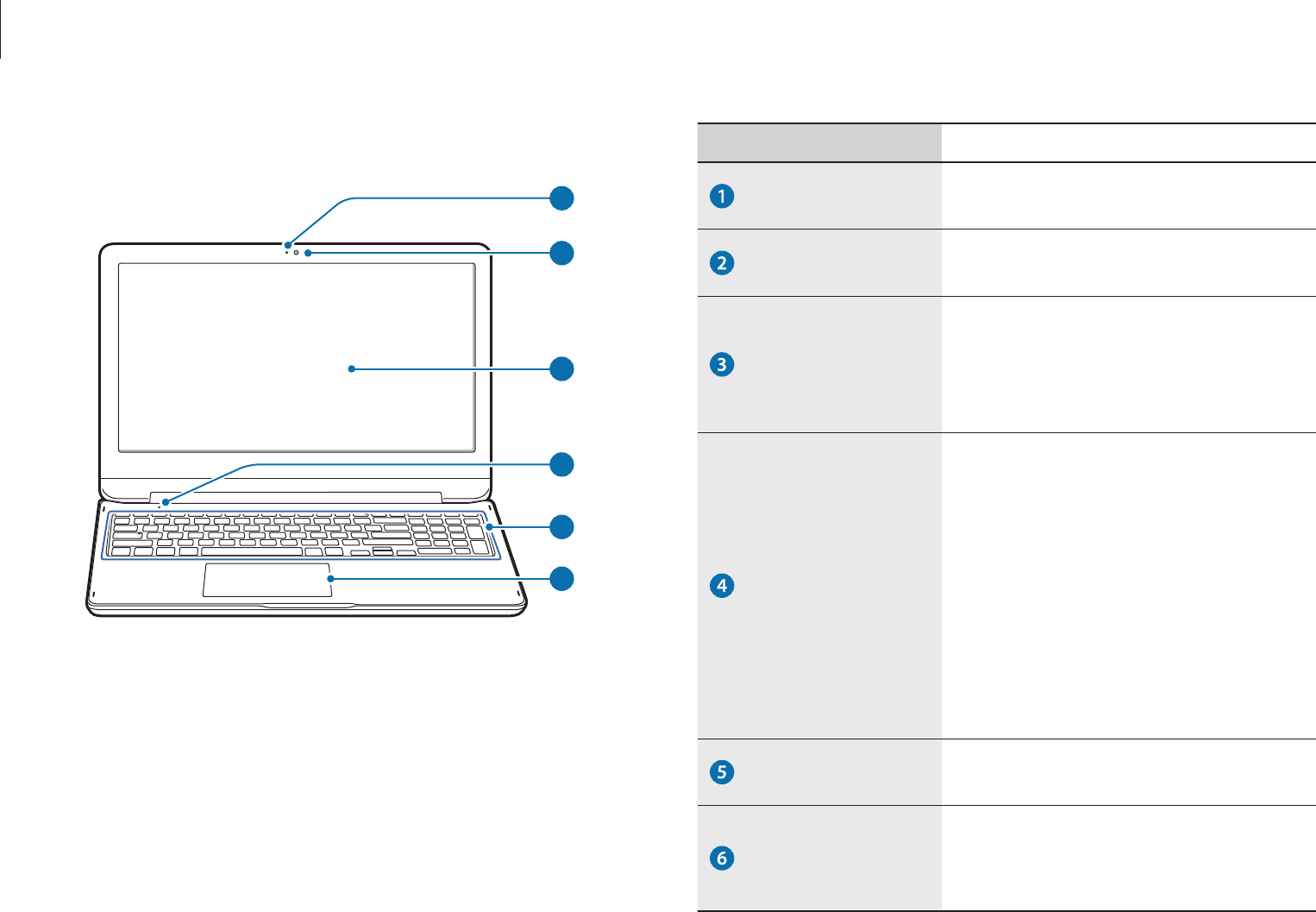
Getting started
8
Number/Name Description
Camera indicator
light
•
This indicates the camera
operating status.
Camera
•
Using this camera, you can take
still pictures and record video.
LCD/Touch screen
(optional)
•
The screen’s images are displayed
here.
•
Recognizes touch interactions
(Only for touch screen models).
Illumination
sensor
•
The sensor detects the ambient
light.
•
If the ambient light level becomes
too low, the keyboard’s backlight
will automatically turn on.
•
If there is sufficient ambient
lighting, the keyboard’s backlight
will automatically turn off.
•
Do not block the sensor.
Keyboard
•
Enter text or control computer
functions.
Touchpad
•
Moves the cursor and selects
options.
•
Functions as a mouse.
▶ For 15.6 inch models
2
3
6
1
4
5
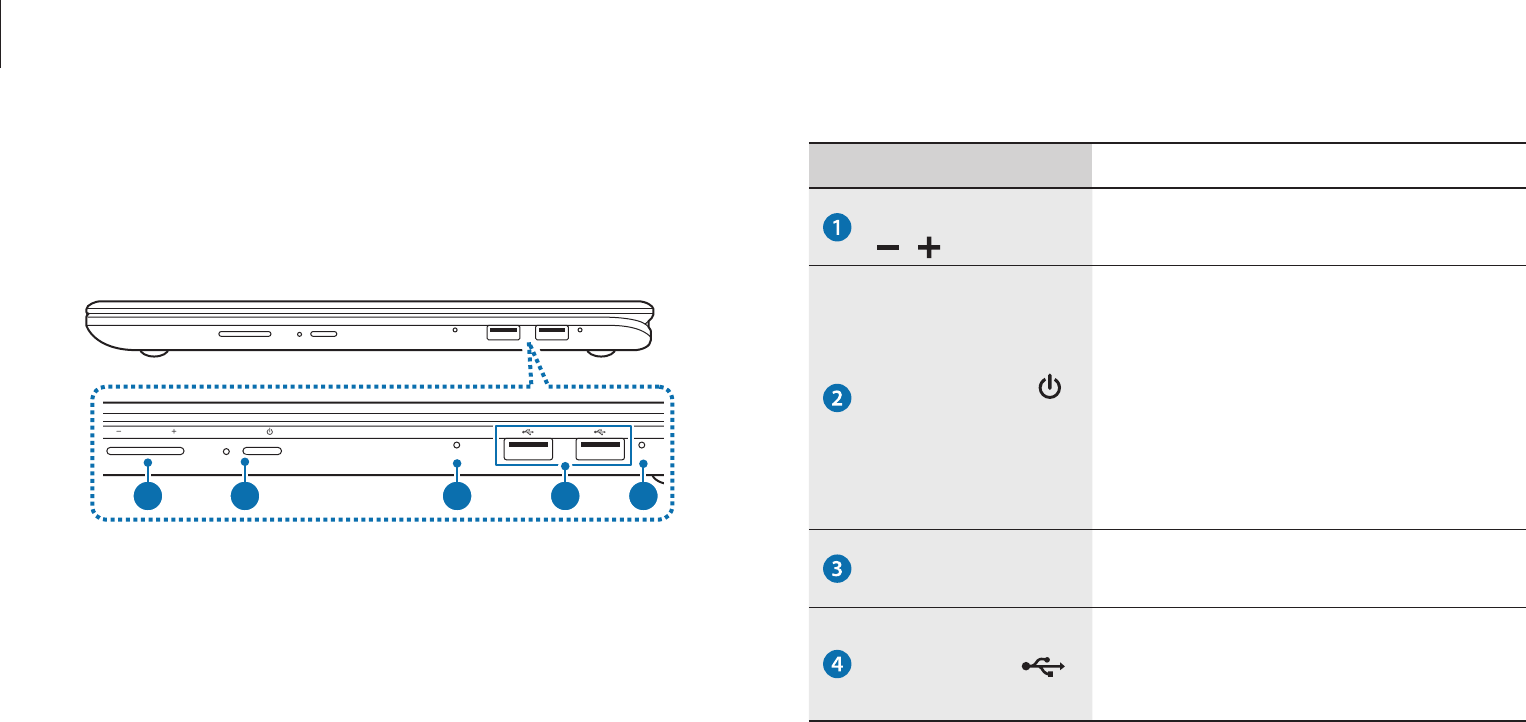
Getting started
9
Number/Name Description
Volume button
/
•
Adjusts the volume level.
Power button /
Power LED
•
Turns the computer on and off.
•
Shows the operating status of the
computer.
–
Red
: Charging
–
Green
: Fully charged
–
Blue
: Turned on
Microphone
•
You can use the built-in
microphone.
USB 2.0 port
•
Connect various peripheral
devices, such as a mouse, camera,
or keyboard.
Right view
▶ For 13.3 inch models
1 2 3 34
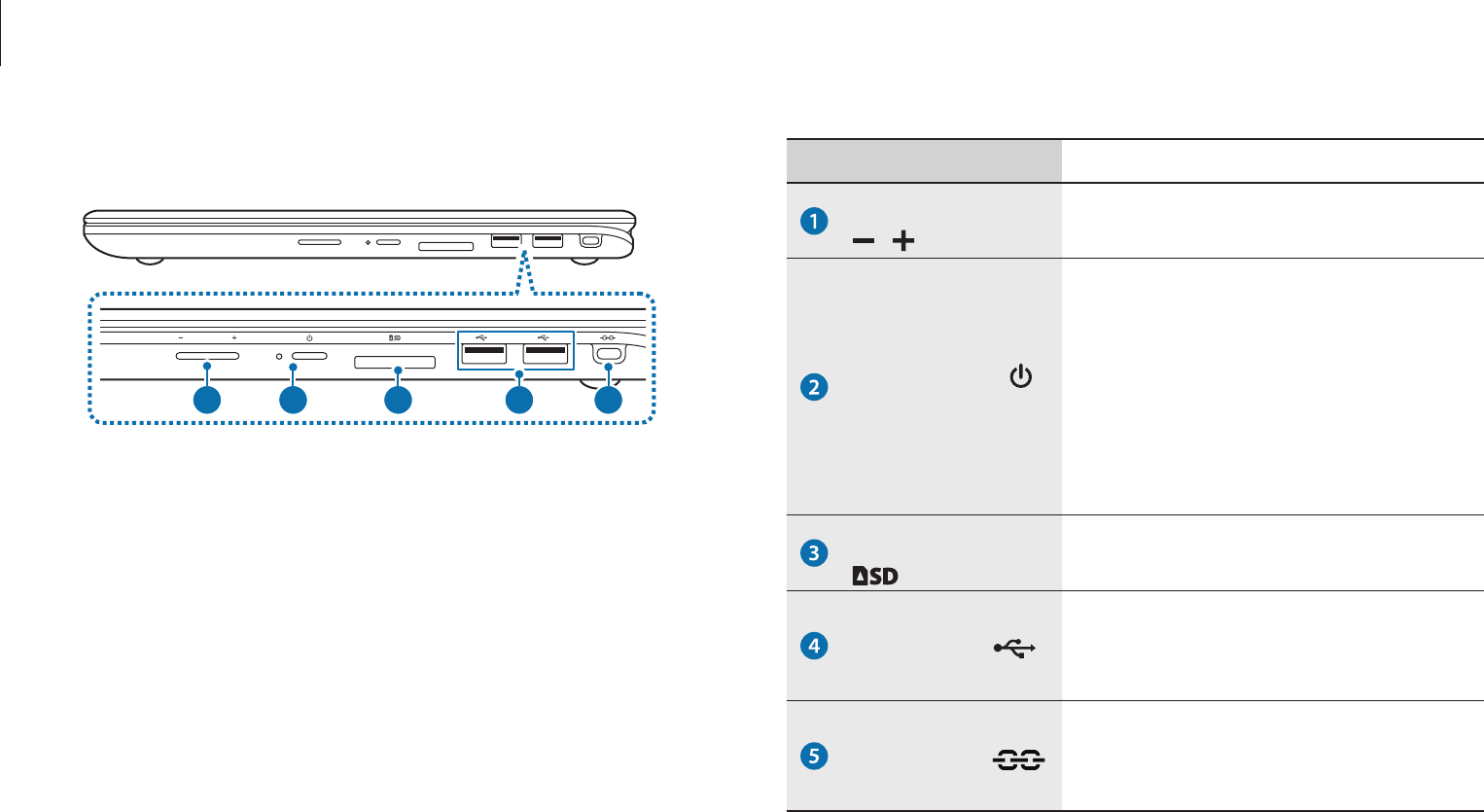
Getting started
10
Number/Name Description
Volume button
/
•
Adjusts the volume level.
Power button /
Power LED
•
Turns the computer on and off.
•
Shows the operating status of the
computer.
–
Red
: Charging
–
Green
: Fully charged
–
Blue
: Turned on
Memory card slot
(optional)
•
Insert a memory card into the slot.
USB 2.0 port
•
Connect various peripheral
devices, such as a mouse, camera,
or keyboard.
Security slot
•
Secure the computer by
connecting an optional lock and
cable to it.
▶ For 15.6 inch models
1 2 3 4 5
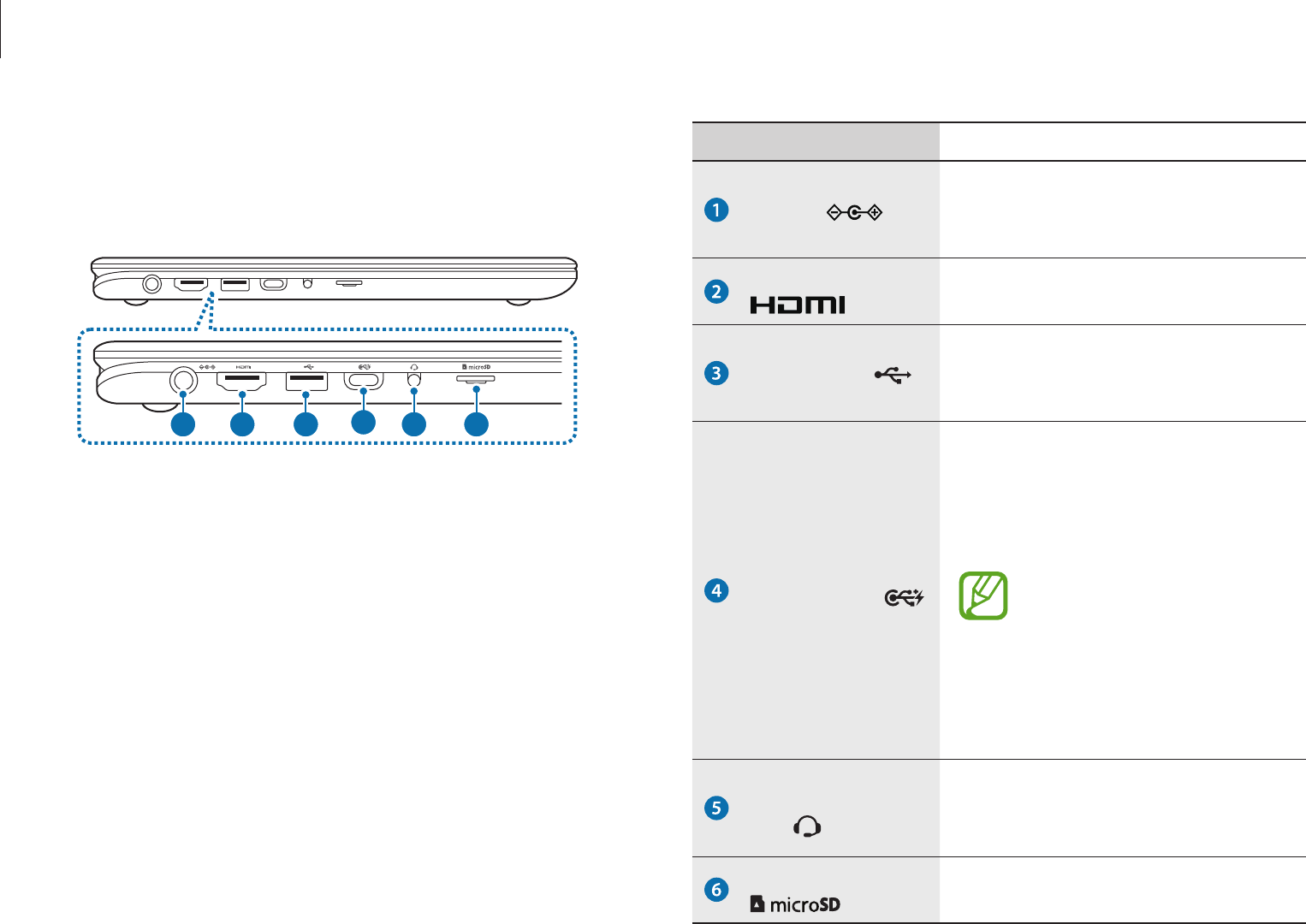
Getting started
11
Number/Name Description
DC jack
•
This jack connects to the AC
adapter to supply power to the
computer.
HDMI port
•
Used to connect an HDMI cable
to an external device.
USB 3.0 port
•
Connect various peripheral
devices, such as a mouse, camera,
or keyboard.
USB-C™ port
•
The USB-C™ port can be used to
connect and charge a USB-C™
device, or connect to an external
display device.
•
Purchase an adapter
separately to connect to
an external display
•
The computer cannot be
charged via the USB-C™
port.
Earpiece/Headset
jack
•
Connect an earpiece or a headset
to the computer to listen to
audio.
Memory card slot
•
Insert a memory card into the
slot.
Left view
▶ For 13.3 inch models
1 2 3 45 6
About the chargeable USB port
•
It may take longer to charge the battery when charging a USB
device.
•
The battery power level may be reduced when charging a USB
device while the computer is powered by the battery.
•
The charging status of the USB device is not displayed on the
computer.
•
To turn on the charging function while the computer is
turned off, open the
Samsung Settings
application and select
Convenience
→
USB charging in sleep mode
→
ON
.
•
This feature may not be available on some USB devices.
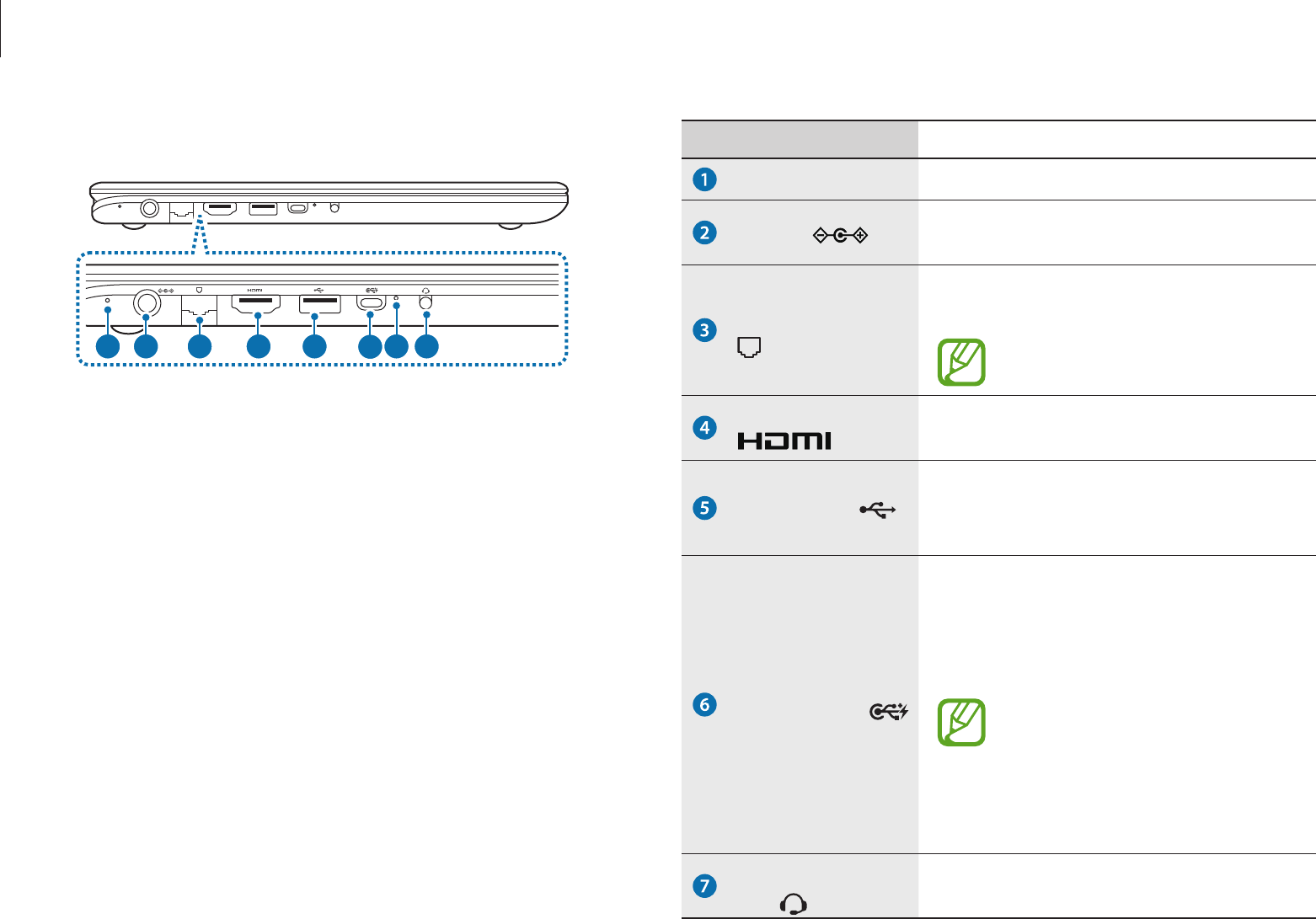
Getting started
12
Number/Name Description
Microphone
•
You can use the built-in microphone.
DC jack
•
This jack connects to the AC adapter
to supply power to the computer.
Wired LAN port
•
Connect the Ethernet cable to this
port.
You can use a wired LAN by using
the LAN adapter (optional).
HDMI port
•
Used to connect an HDMI cable to an
external device.
USB 3.0 port
•
Connect various peripheral devices,
such as a mouse, camera, or
keyboard.
USB-C™ port
•
The USB-C™ port can be used to
connect and charge a USB-C™
device, or connect to an external
display device.
•
Purchase an adapter
separately to connect to an
external display.
•
The computer cannot be
charged via the USB-C™ port.
Earpiece/Headset
jack
•
Connect an earpiece or a headset to
the computer to listen to audio.
▶ For 15.6 inch models
1 13 5 67
4
2
About the chargeable USB port
•
It may take longer to charge the battery when charging a USB
device.
•
The battery power level may be reduced when charging a USB
device while the computer is powered by the battery.
•
The charging status of the USB device is not displayed on the
computer.
•
To turn on the charging function while the computer is
turned off, open the
Samsung Settings
application and select
Convenience
→
USB charging in sleep mode
→
ON
.
•
This feature may not be available on some USB devices.
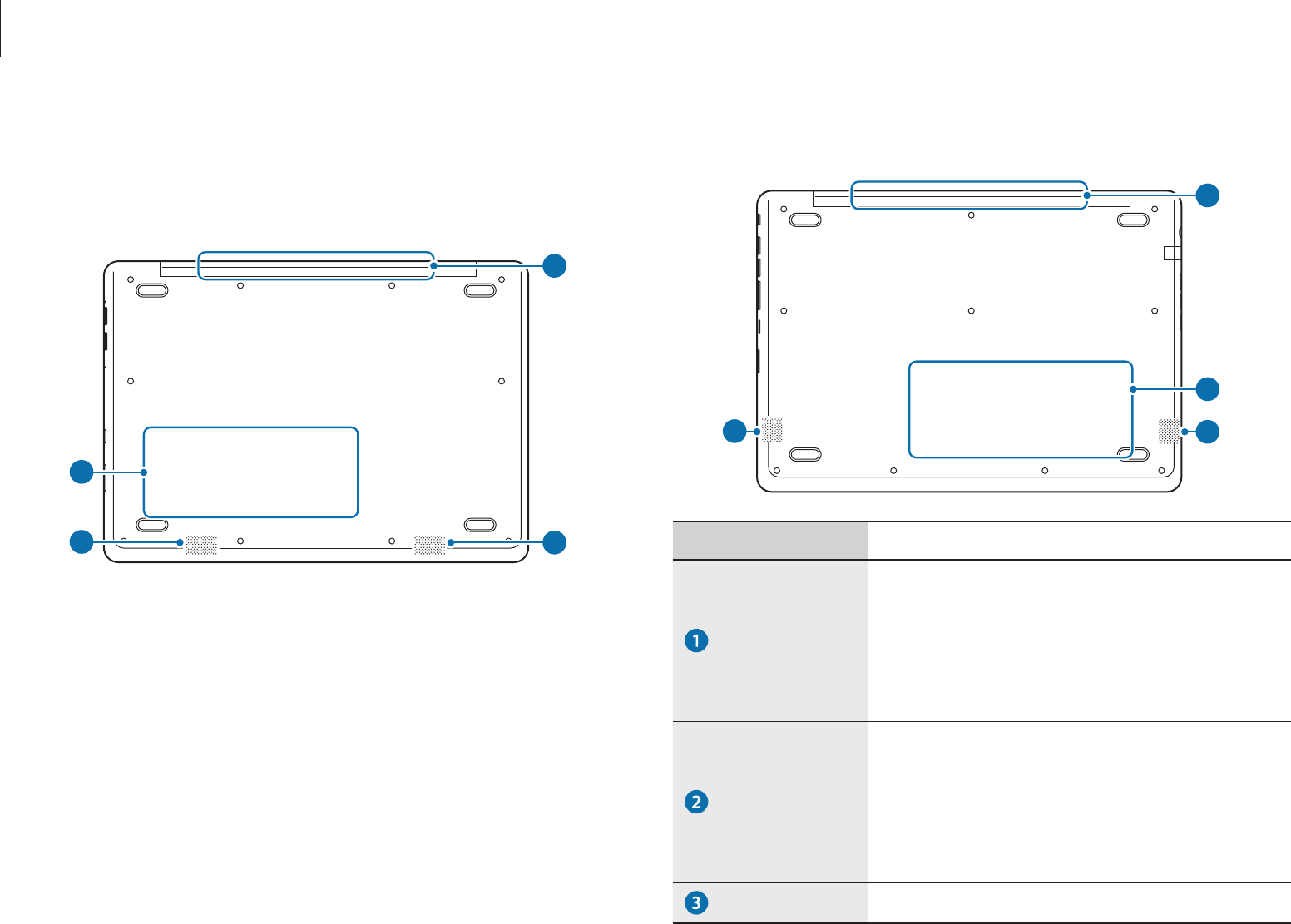
Getting started
13
▶ For 15.6 inch models
1
3
3
2
Number/Name Description
Fan vents
•
The internal heat of the computer is
emitted through these holes.
•
If the vents are blocked the computer
may overheat. Avoid blocking the vents
as this may be dangerous.
Internal
battery
•
Provides power to the computer when
not connected to an AC adapter.
•
To remove or replace the internal battery,
take it to a Samsung Service Center. You
will be charged for this service.
Speaker
•
Sound is emitted from the speakers.
Bottom view
▶ For 13.3 inch models
1
3
3
2
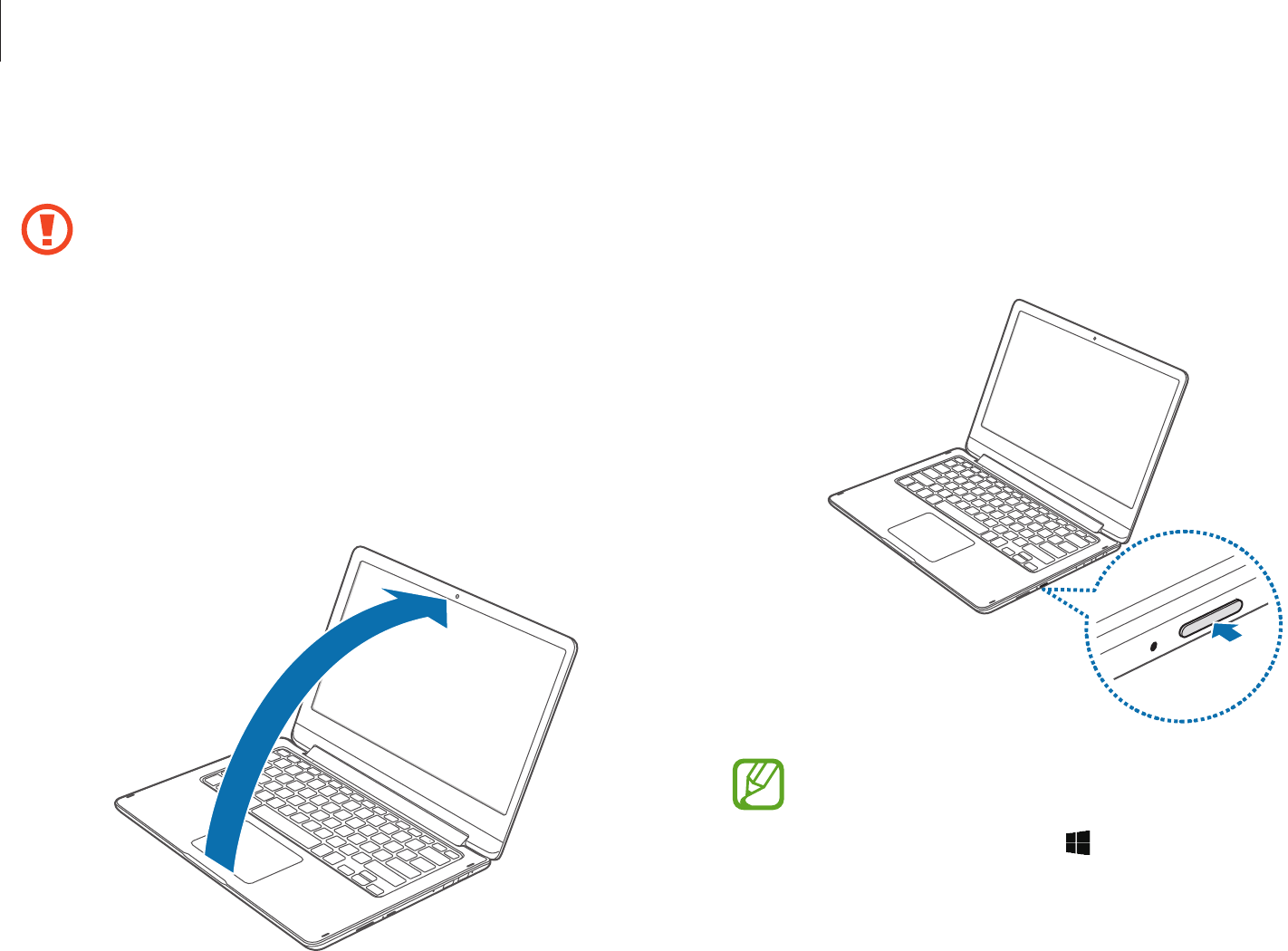
Getting started
14
3 The computer turns on automatically when the LCD panel is
opened.
If the computer does not turn on automatically, press the
Power button.
Set the device not to automatically turn on the computer
when the LCD panel is opened.
1. Select the Start button ( )
→
All apps
→
Samsung
→
Samsung Settings
.
2. Select
Convenience
→
Auto Booting
→
Off
.
Turning the computer on and off
Fully charge the battery using the AC adapter before using
the computer
for the first time
.
Turning the computer on
1 Before turning on the computer, check that the battery is
charged and charge it if necessary.
2 Open the LCD panel.
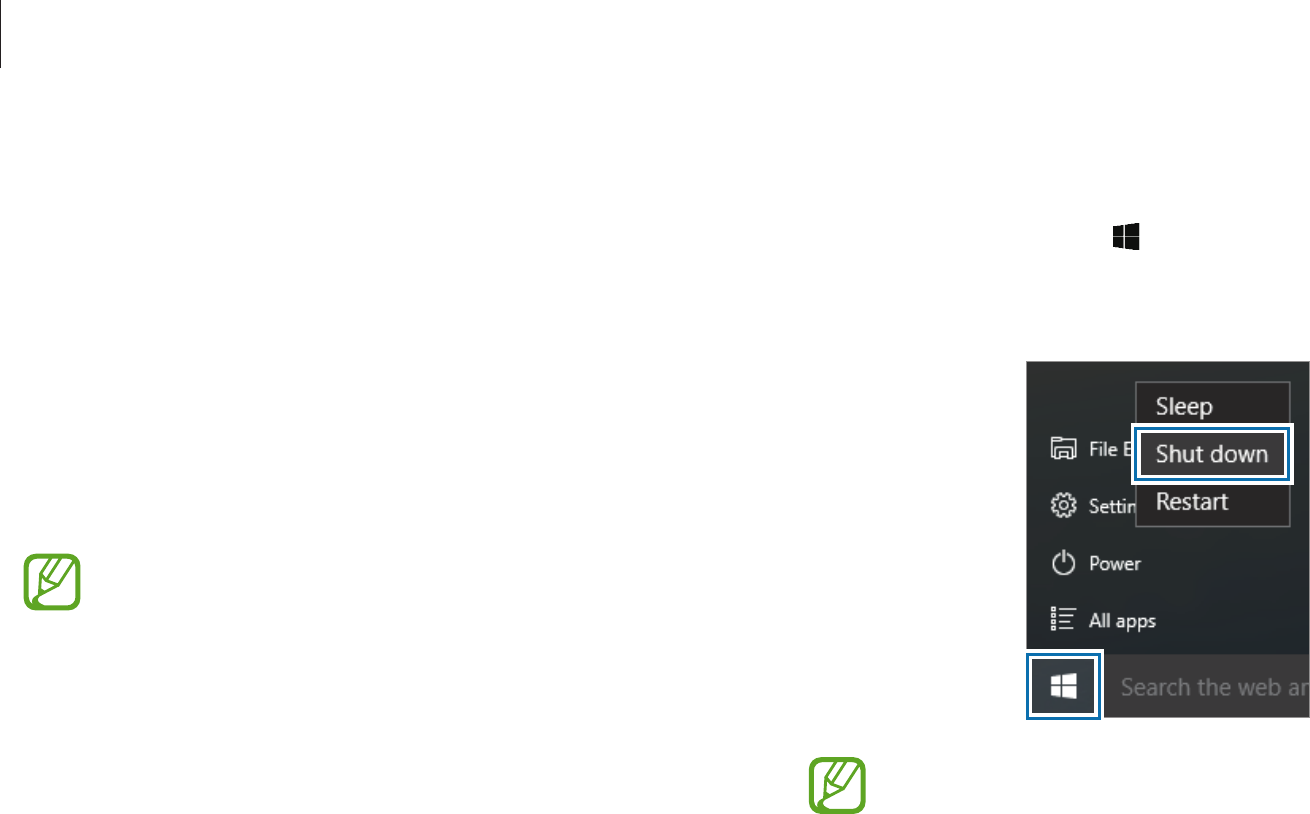
Getting started
15
Turning the computer off
1 Select the Start button ( ).
2 Select
Power
→
Shut down
.
•
Save all data before turning off the computer.
•
Since the procedures to turn the computer off may
differ depending on the installed operating system,
turn the computer off according to the procedures for
the purchased operating system.
About Windows Activation
When you turn the computer on for the first time, the Windows
activation screen appears.
Follow the activation procedures according to the instructions on
the screen to use the computer.
The computer’s date and time may be incorrect when you turn it
on for the first time. They may also be incorrect if the battery has
been fully discharged or removed. To set the date and time, go
to the desktop taskbar and right-click the clock area. Then, select
Adjust date/time
and set the current date and time.
•
To adjust the brightness of the screen, see LCD
brightness.
•
To adjust the sound, see Volume.
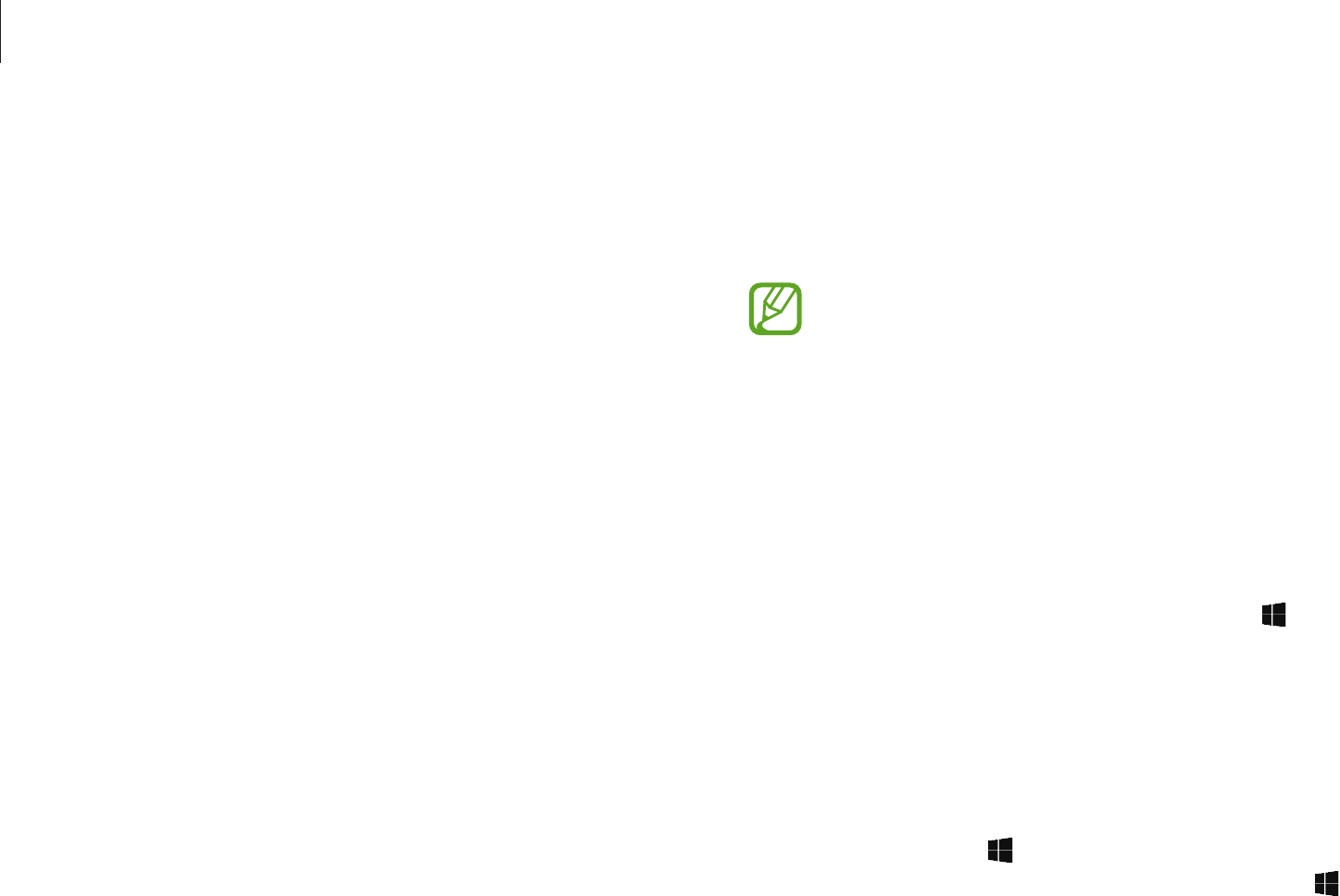
Getting started
16
Windows
Microsoft Windows is an operating system that is used to control a
computer.
•
Images and available features may differ depending on
the model and operating system.
•
This manual is designed for Windows 10 and content
may differ depending on the OS version.
•
The image displayed on the desktop screen may differ
between models and OS versions.
Help
To access help information, select the Start button ( )
→
All apps
→
Get started
.
Using the control panel
You can adjust basic system settings, such as hardware, software,
or user account settings.
Select the Start button ( )
→
All apps
→
Windows system
→
Control Panel
. Alternatively, right-click the Start button ( ) and
select
Control Panel
.
Then, select options you want to change.
Unlocking the screen
To unlock the lock screen, do one of the following:
•
Touch screen
: Swipe upwards from the bottom of the screen.
•
Mouse
: Click the lock screen.
•
Keyboard
: Press any key.
•
Touchpad
: Tap the touchpad.
If the account has a password, enter the password to log in after
unlocking the screen.

Getting started
17
Using a multi desktop
Multi desktop allows you to work on various tasks at the same
time via multiple desktops. You can use different desktops for
various purposes.
Creating a new desktop
1 Select on the taskbar.
2 Select
New desktop
.
A new desktop will be added. You can select a desktop from
the list displayed at the bottom of the screen.
Multi desktop list
Deleting a desktop
1 Select on the taskbar.
2 Move the cursor over the desktop icon you want to delete.
Then, select in the upper-right corner of the icon.
Moving a program to another desktop
1 Select on the taskbar.
2 Right-click a window, select
Move to
and select the name of
the desktop you want to move the window to.
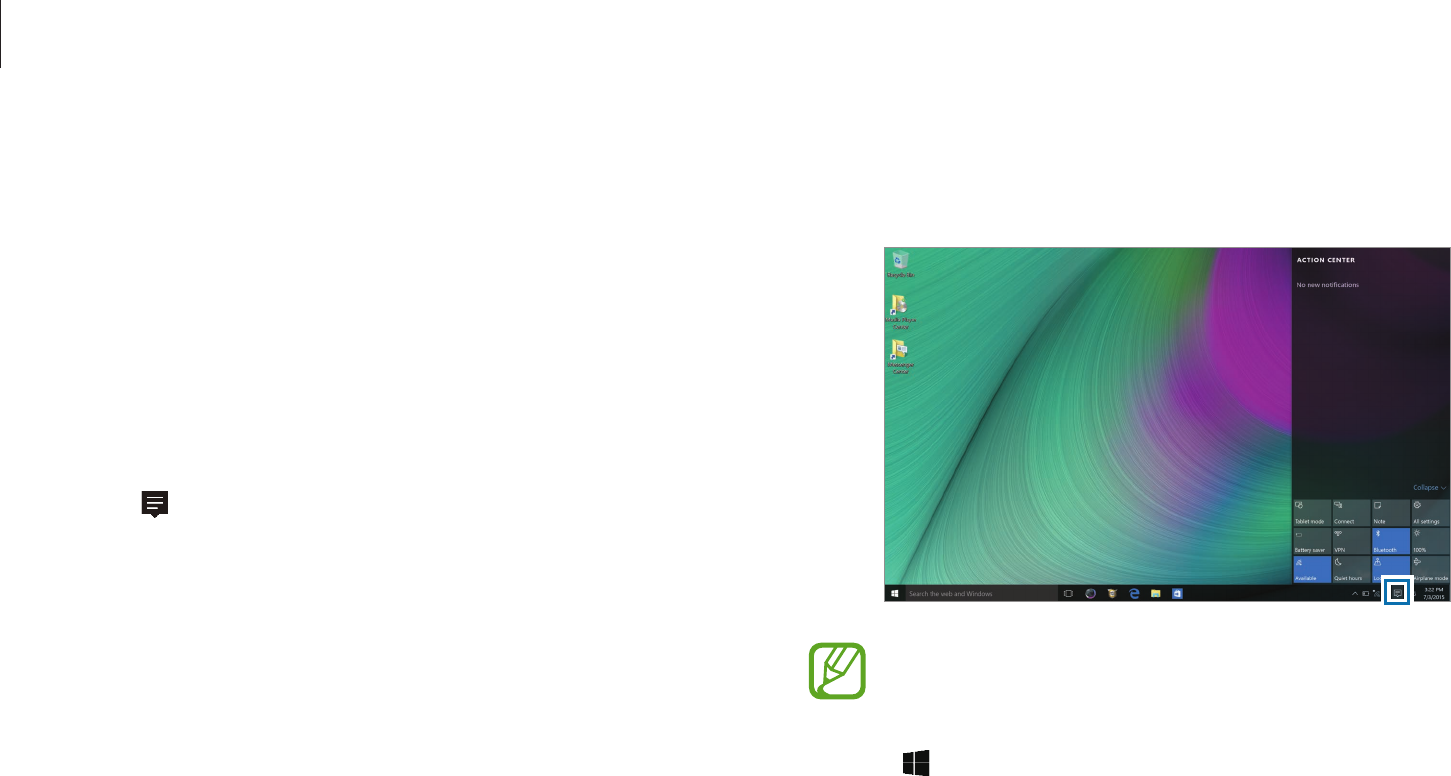
Getting started
18
2 When the action center panel appears, select a message to
check it.
You can enable or disable push notifications for
applications. You can also set personalized hot keys to
appear in the action center by selecting the Start button
()
→
Settings
→
System
→
Notifications & actions
.
Action Center
The Windows 10 action center allows you to receive system
notifications, such as updates, and push notifications, such as
emails and SNS updates. You can also adjust settings conveniently.
For example, you can select wireless network options or adjust the
volume and screen brightness via hot keys in the action center.
Checking notifications
1 Select on the taskbar.
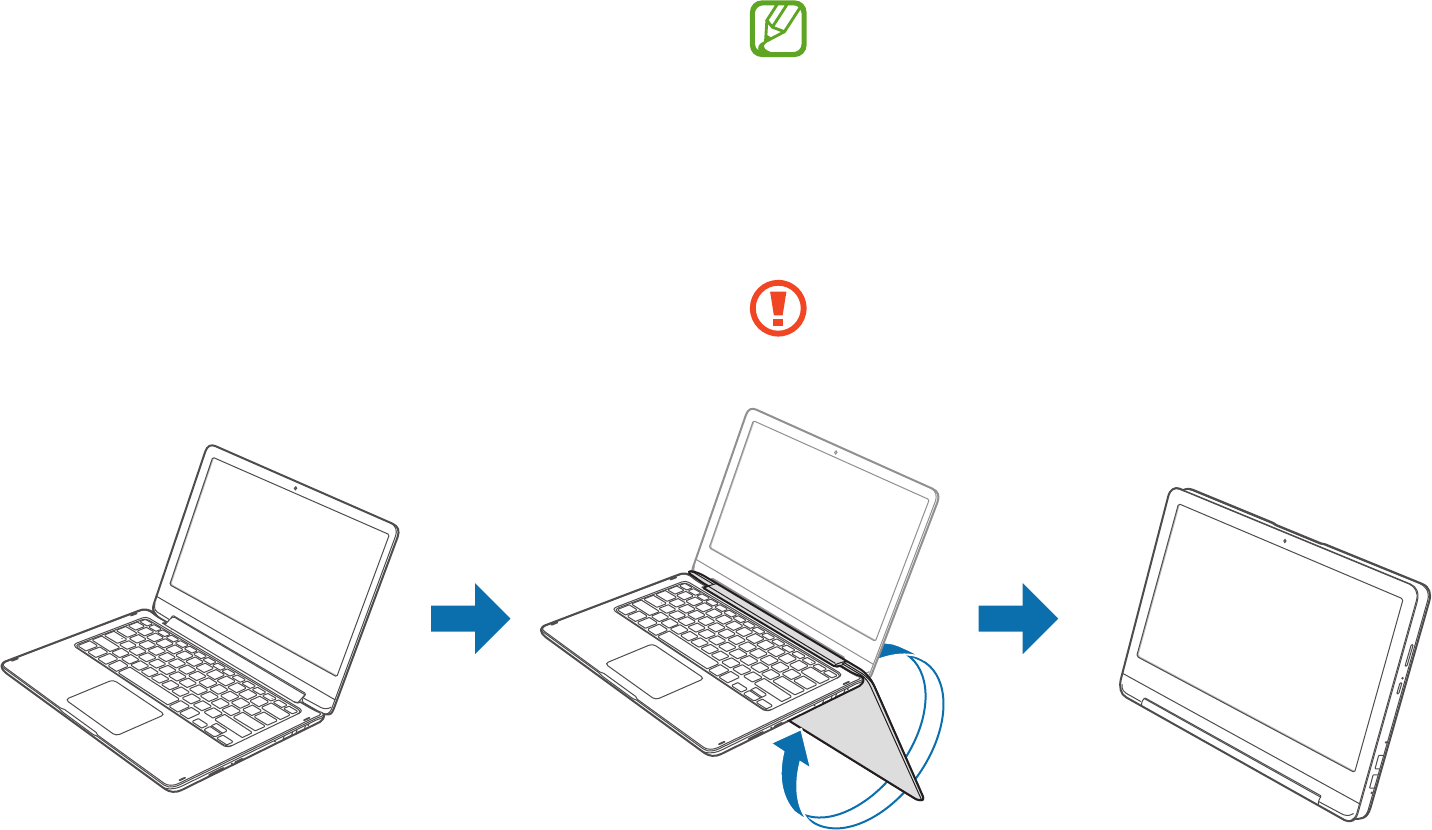
19
When the LCD panel is tilted past the transition point
•
The keyboard and touchpad will automatically be
locked and will not function. But, during processes that
start before Windows operation, such as the BIOS setup
or DOS, the keyboard and touchpad will not be locked.
•
The display will rotate automatically depending on the
computer’s orientation.
When storing the computer in a bag or carrying it, close
the LCD panel to protect the computer.
Basics
Using the computer as a tablet
You can use the computer as a tablet by folding the LCD panel
behind the keyboard.
1 Open the LCD panel and rotate it away from the keyboard
until it touches the bottom side of the computer.
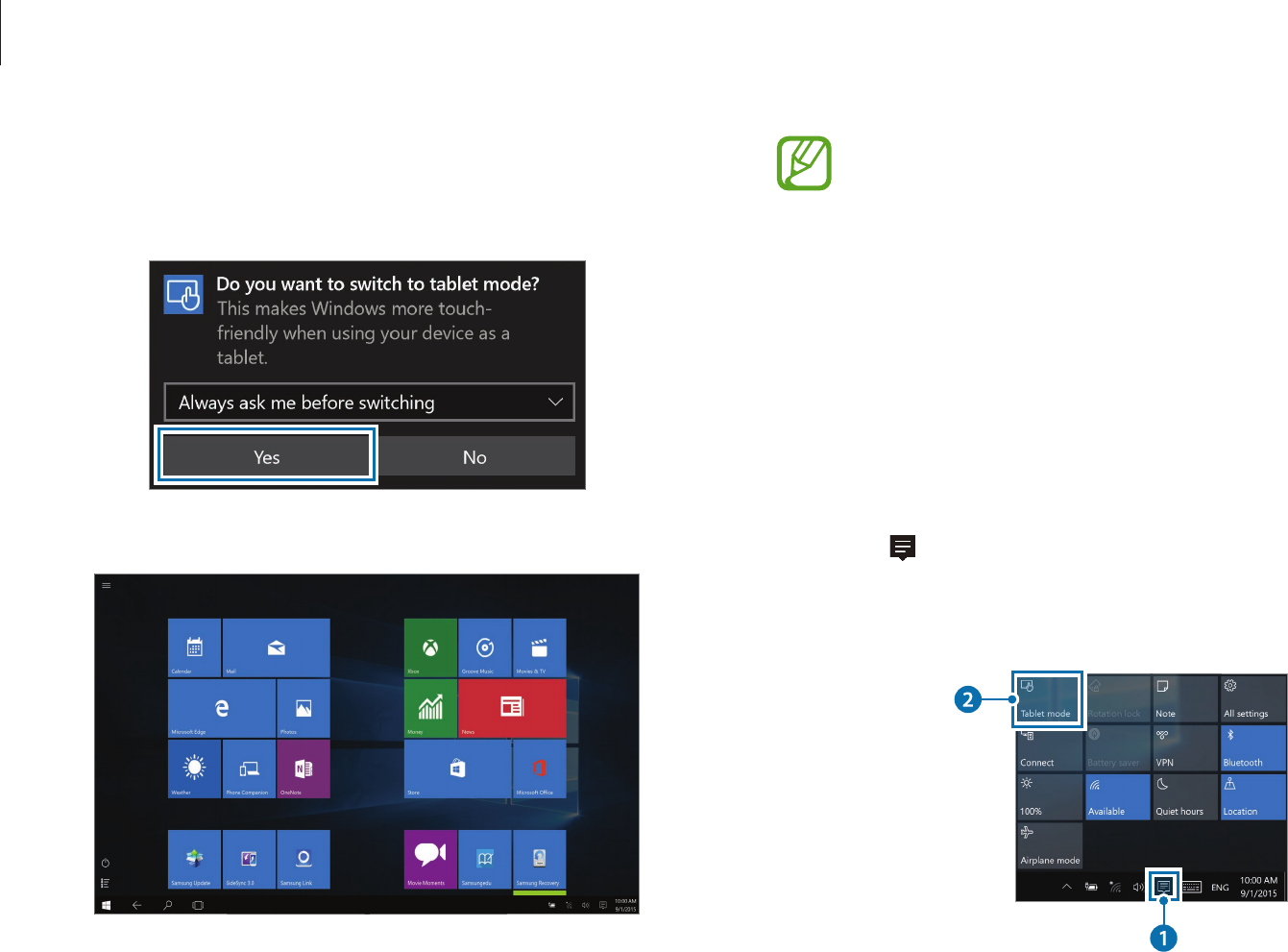
Basics
20
•
When you rotate the LCD panel back to the normal
position, a mode switch confirmation message will
appear. Select
Yes
to switch the computer’s display to
desktop mode.
•
When the screen is turned off while using the computer
as a tablet, press the Volume button to unlock the
screen. When the computer is in sleep mode, press the
Power button to unlock the screen.
You can also switch the computer’s display to tablet mode without
rotating the LCD panel.
1 Select on the taskbar.
2 When the action center panel appears, select
Tablet mode
.
2 A mode switch confirmation message will appear when the
LCD panel is tilted past the transition point. Select
Yes
to
switch the computer’s display to tablet mode.
The display will switch to tablet mode.

Basics
21
Touch screen (optional)
Use your fingers on the touch screen to perform actions.
Touch screen gestures
Tapping
To select menus, options, or applications, tap the touch screen.
Double-tapping
To open files or items, double-tap the touch screen.
Tapping and holding (right-clicking)
To use additional options of an item, tap and hold it on the touch
screen.
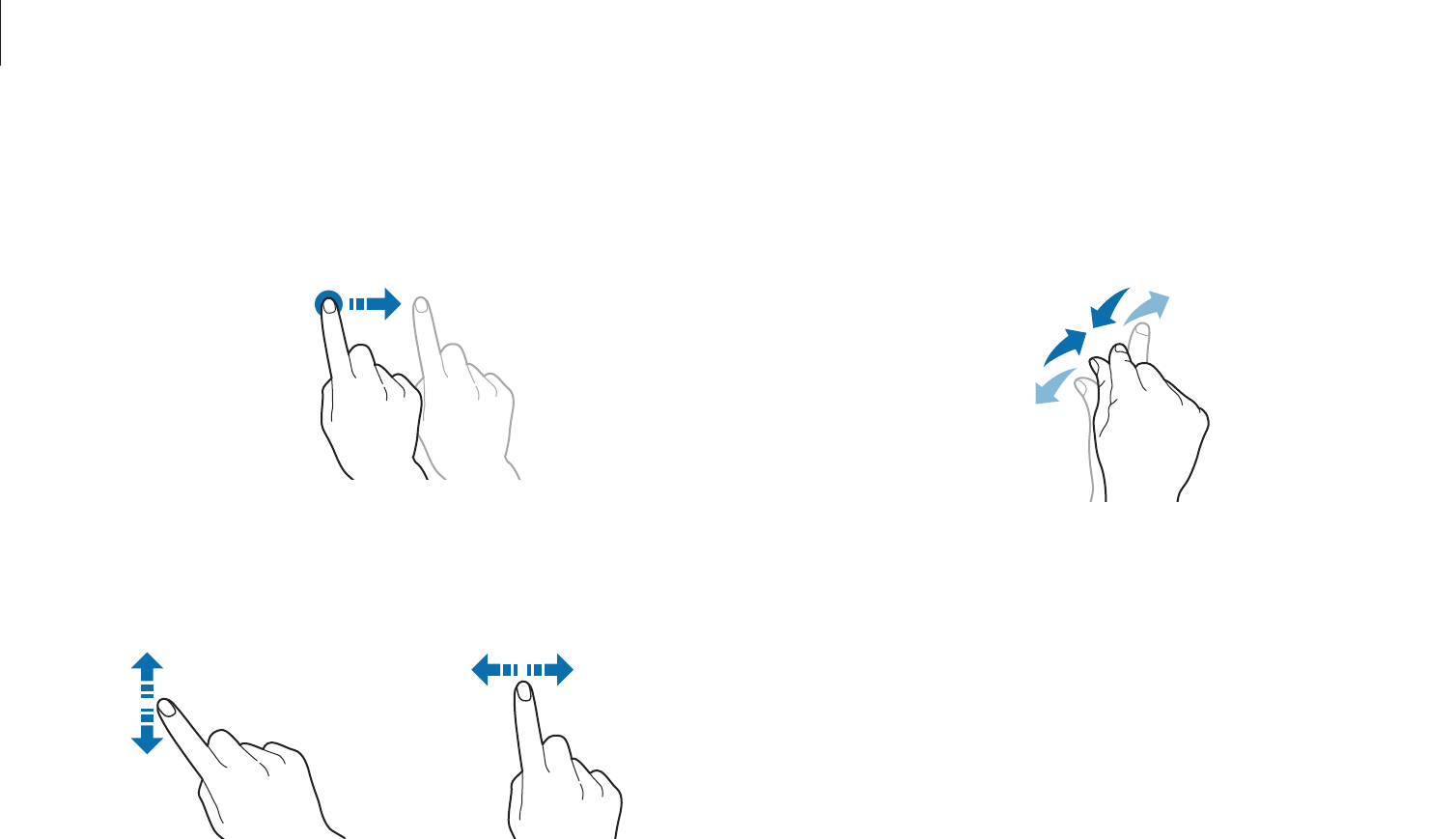
Basics
22
Spreading and pinching
To zoom in, spread two fingers apart on an image or text. Pinch to
zoom out.
Dragging
To move an item to another location, tap and hold it, and then
drag it on the touch screen to the desired location.
Scrolling
To scroll up, down, left, or right, swipe on the touch screen.
or

Basics
23
•
Leaving the touch screen idle for extended periods
may result in afterimages (screen burn-in) or ghosting.
Turn off the touch screen when you are not using the
computer.
•
Make sure your hands are clean and dry before using
the touch screen. Remove any moisture from your
hands before using the touch screen.
•
Do not expose the computer to foreign substances.
Doing so may cause the touch screen to malfunction.
•
Very light touches on the touch screen may not be
recognized.
•
Precisely tap items on the touch screen for the best
results.
•
The touch screen sensors are located on the edges of
the touch screen. Therefore, do not cover the edges of
the touch screen with protective covers or accessories.
•
Touch screen gestures are available for touch screen
models running Windows and work only with some
applications.
•
Do not subject the touch screen to severe impacts or
press it with sharp objects. Doing so may damage the
touch screen.
•
Do not allow the touch screen to come into contact
with other electrical devices. Electrostatic discharges
can cause the touch screen to malfunction.
•
Do not expose the touch screen to water. The touch
screen may malfunction in humid conditions or when
exposed to water.
•
Do not spray liquid cleansing solutions directly onto
the touch screen. The solution may enter the touch
screen or cause undesired operation. To clean the
screen, dampen a cloth with solution and gently wipe
the screen. Do not use solutions or cloths that contain
abrasive materials, as they may damage the touch
screen.
•
Do not damage the edges of the touch screen. Doing so
may damage the touch screen.
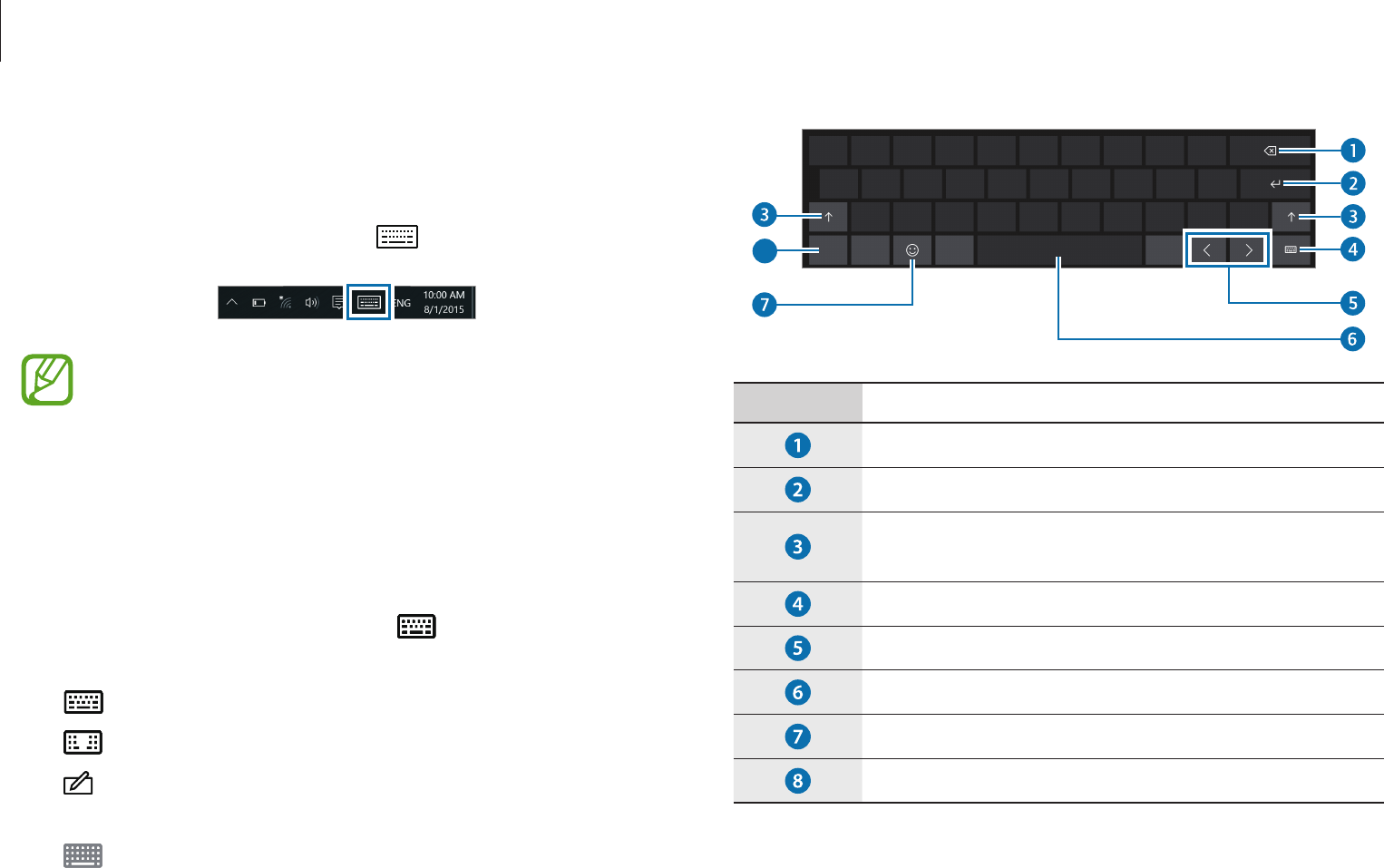
Basics
24
Entering text
Use the virtual keyboard to enter text.
To open the virtual keyboard, select on the taskbar.
•
Some languages are not support by the virtual
keyboard. To enter text, change the input language to
one of the supported languages.
•
When using the computer for extended periods, it is
recommended to enter text with the physical keyboard.
Changing the keyboard layout
To change the keyboard layout, select and select one of the
following:
•
: Simplified Qwerty keyboard
•
: Split Qwerty keyboard for entering text with two hands
•
: Handwriting keyboard used to enter text from written
words.
•
: Standard Qwerty keyboard
8
Number Description
•
Delete a preceding character.
•
Move to the next line.
•
Create an uppercase character. For all caps, tap
it twice.
•
Change the keyboard layout.
•
Move the cursor.
•
Enter a space.
•
Enter emoticons.
•
Enter numerals and punctuation marks.
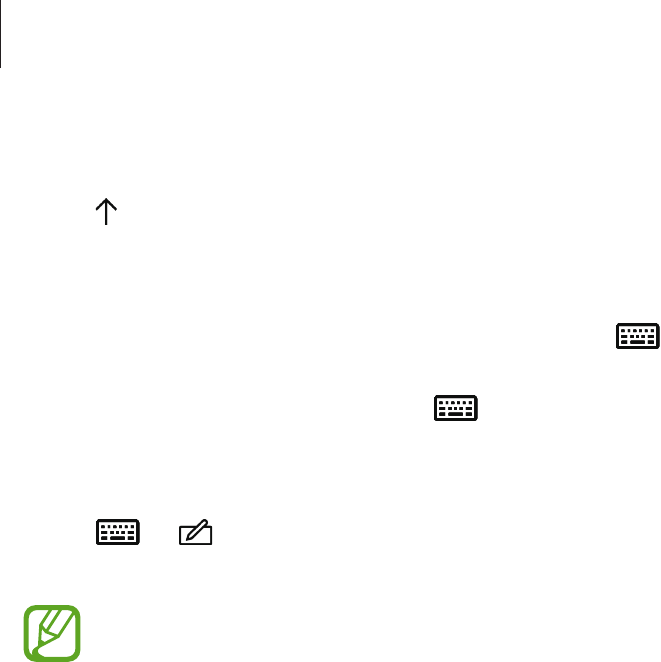
Basics
25
Copying and pasting
1 Tap and drag your finger across text to select it.
2 Tap and hold the text to display the options.
3 Select
Copy
or
Cut
.
4 Tap and hold a text input field and then select
Paste
.
Entering uppercase
Select before entering a character. For all caps, tap it twice.
Changing language keyboards
Add keyboards to enter text in other languages. Select
→
Language preferences
→
Region & language
→
Add a
language
→
a language. Then, select and select a language.
Handwriting
Select
→
, and then write a word in the on-screen text
input field.
Handwriting is not supported for some languages.
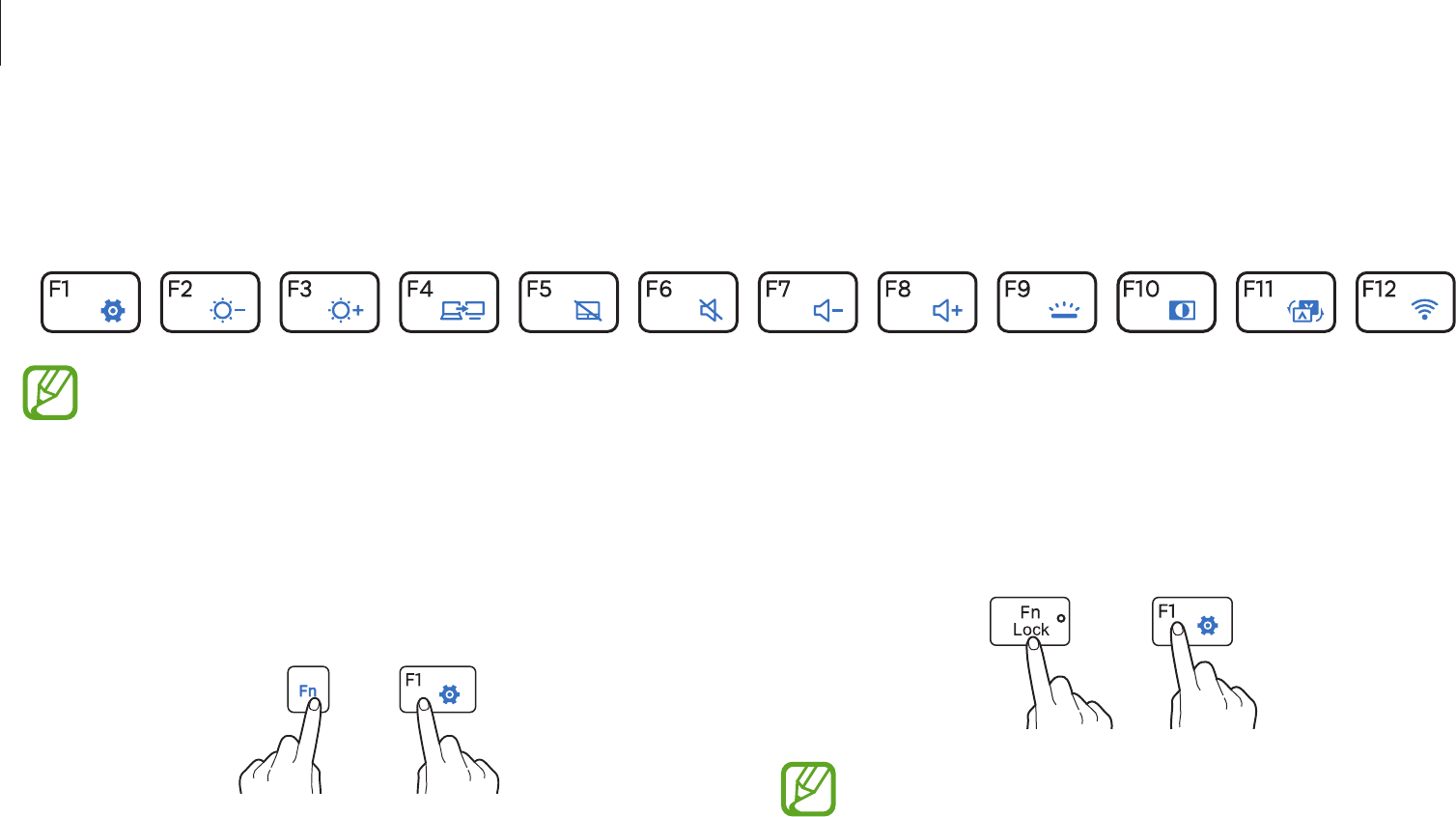
Basics
26
Using hot keys
To use keyboard hot keys, do one of the following:
•
Press and hold the
Fn
key and press a hot key.
+
Keyboard
Enter text or access computer functions with the keyboard.
•
Images and available features may differ depending on the model and operating system.
•
The keyboard layout may differ depending on the country.
•
Press the
Fn Lock
key. When the
Fn Lock
key LED turns on,
press a hot key.
→
When the
Fn Lock
key is on, hot keys are activated without
pressing the
Fn
key.
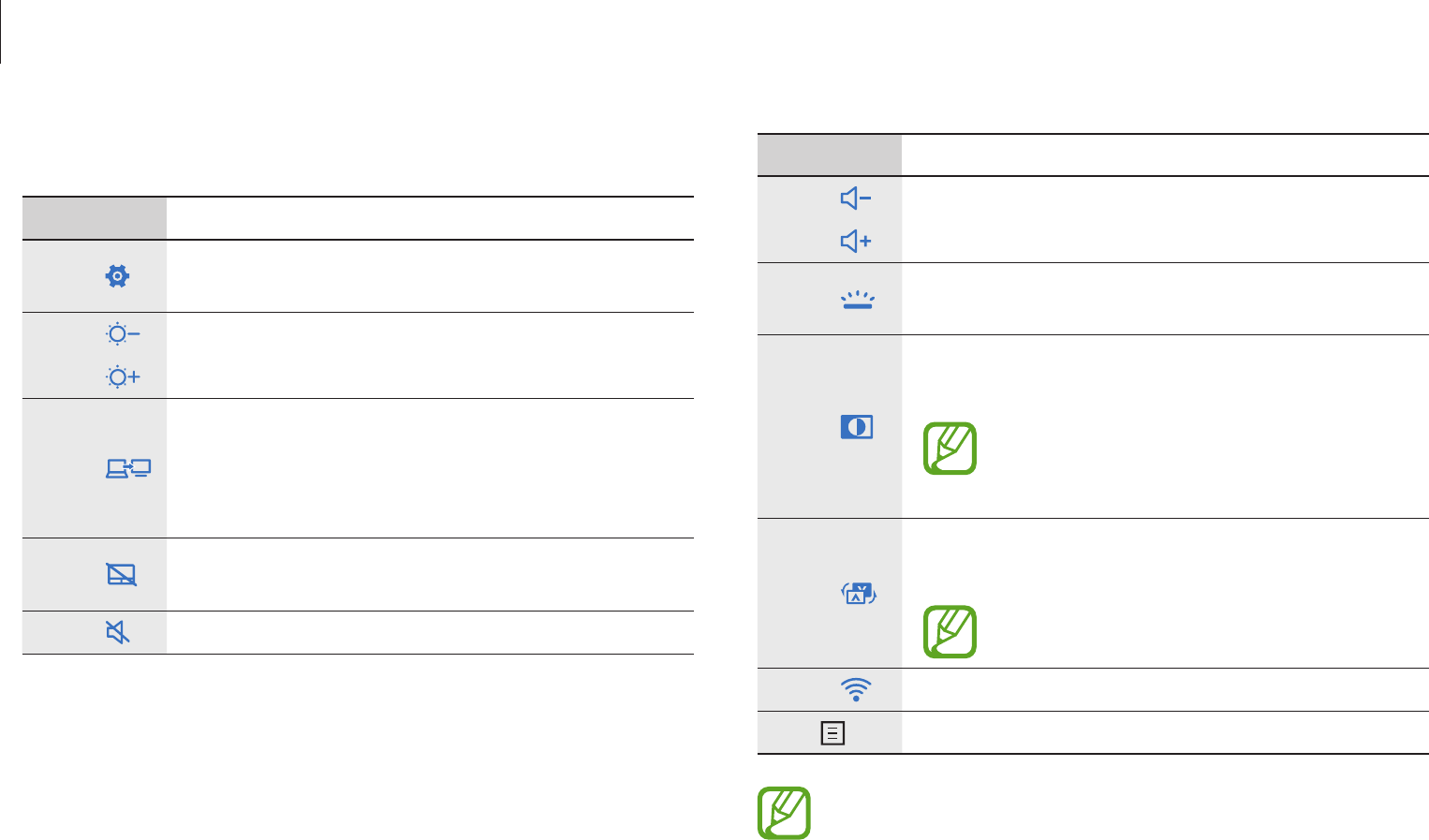
Basics
27
Key/Icon Description
F7
•
Volume control
: Adjust the volume level.
F8
F9
•
Keyboard backlight
: Turn the keyboard
backlight on or off.
F10
•
Video HDR
: Make the video brighter and
clearer.
This feature is applied to only the videos
and may not be available for some video
players or sites.
F11
•
Invert the screen so that the image appears
normally when the screen is flipped.
This feature may not be available in some
applications, such as games.
F12
•
Wi-Fi network
: Turn the Wi-Fi feature on or off.
Fn +
•
Right-click
: Perform the right-click function.
If the hot keys do not work properly, install the
Samsung
Settings
application.
Hot key functions
Key/Icon Description
F1
•
Samsung Settings
: Launch the
Samsung
Settings
application.
F2
•
Screen brightness control
: Adjust the
brightness of the display.
F3
F4
•
LCD/External monitor
: Switch between the
LCD and an external display device when an
external display device is connected to the
computer.
F5
•
Touchpad
: Turn the touchpad function on or
off.
F6
•
Mute
: Mute or unmute the audio.
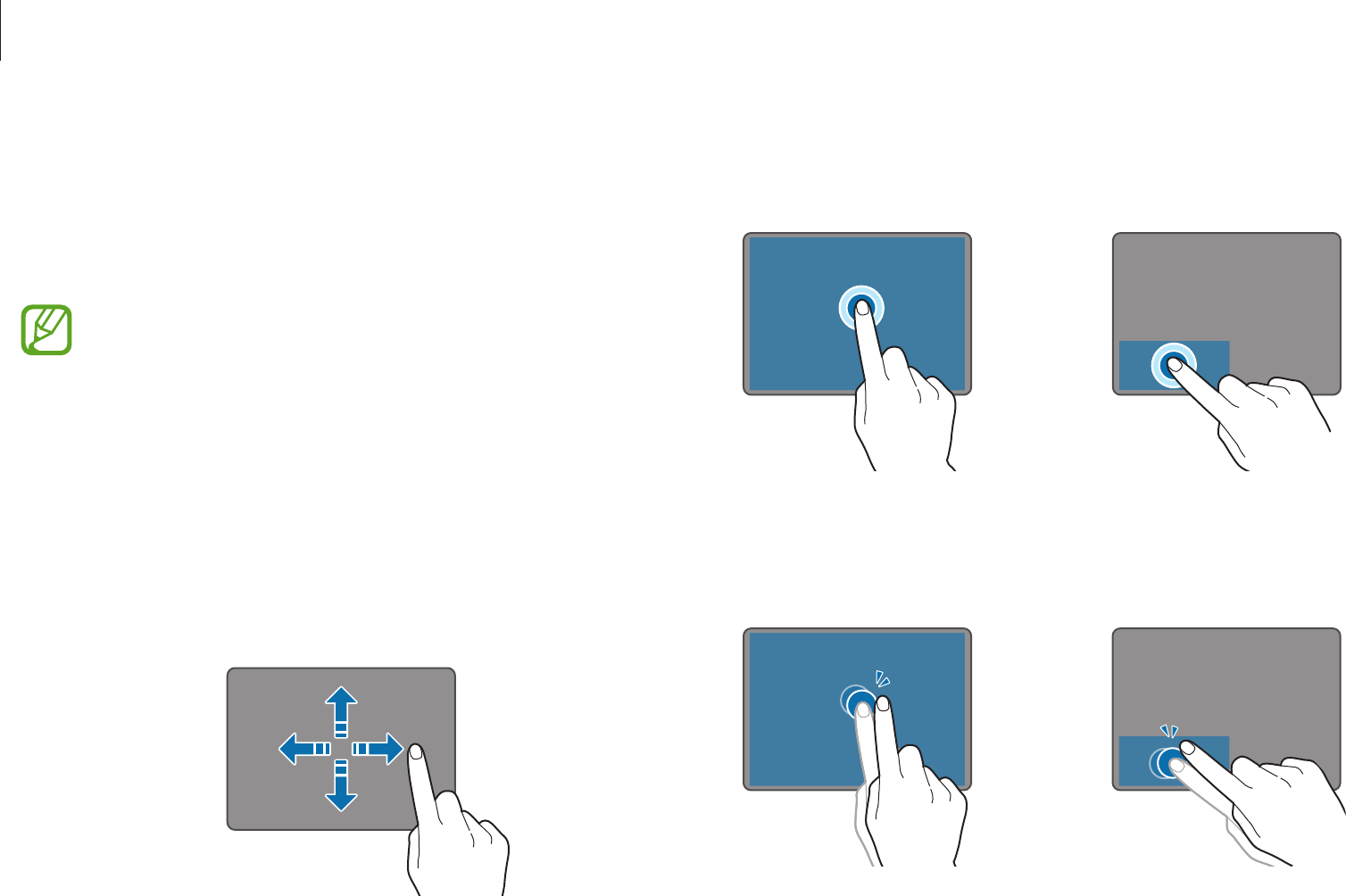
Basics
28
Clicking
Tap the touchpad or press the left touchpad button.
or
Tap
Click
Double-clicking
Double-tap the touchpad or press the left touchpad button twice.
or
Tap-tap
Click-click
Touchpad (optional)
Use the touchpad to move the cursor or select an item. The left
and right buttons of the touchpad act the same as the left and
right buttons of a mouse.
•
Use the touchpad only with fingers. The touchpad will
not recognize actions of other objects.
•
Images and the touchpad layout may differ depending
on the model.
Basic touchpad functions
Moving
To move the cursor, move a finger on the touchpad.
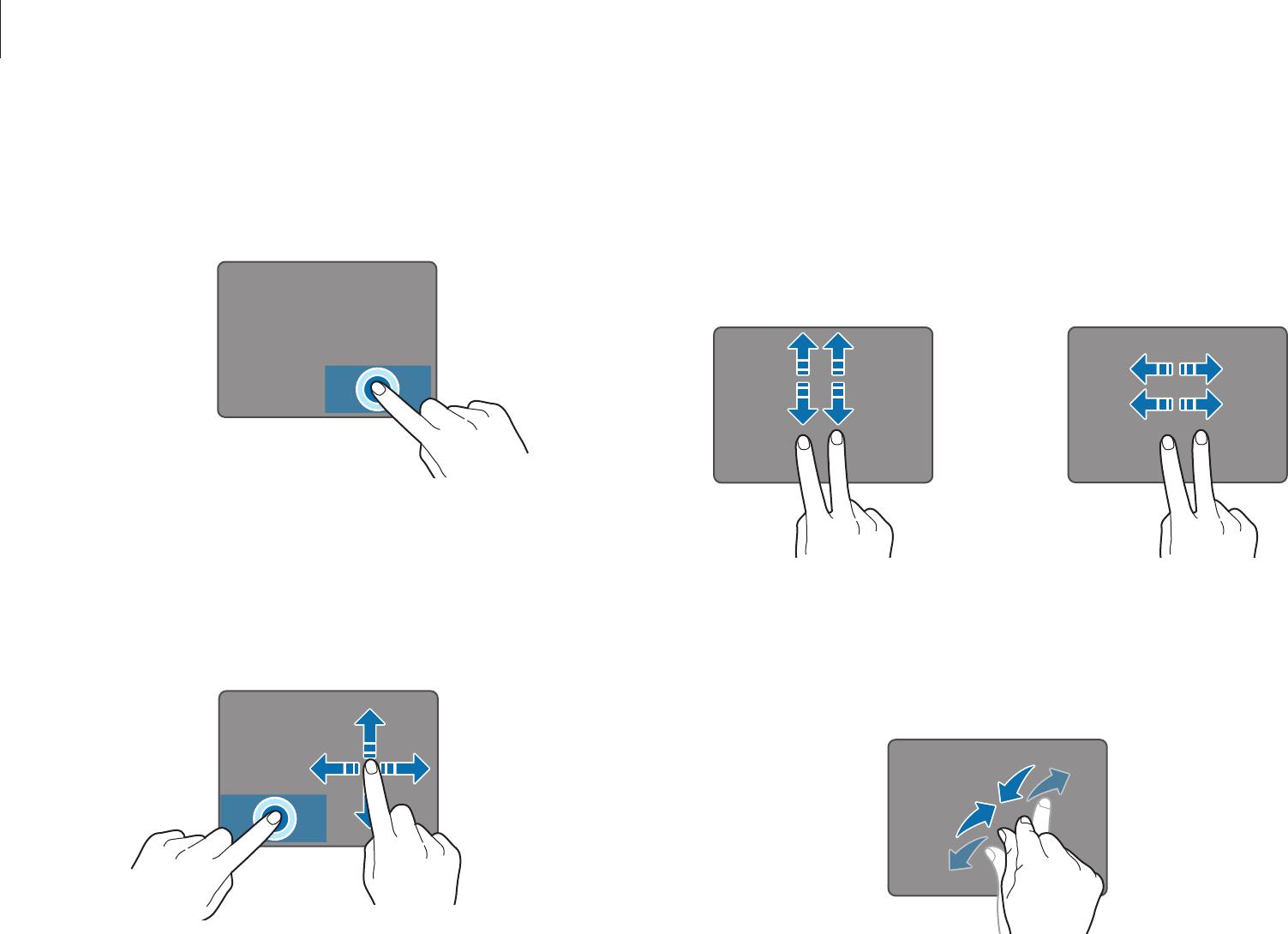
Basics
29
Gesture functions
Swiping
To scroll up, down, left or right to a desired location, swipe with
two fingers on the touchpad.
or
Pinching
To zoom in, spread two fingers apart while viewing a website,
map, or image. Pinch to zoom out.
Right-clicking
This function enables right-clicking.
To right-click an item, press the right touchpad button.
Click
Dragging
To move an icon or an app tile to a desired location, press and hold
it and then drag it to the target position with the left touchpad
button pressed.
Press and hold the left
touchpad button
Move
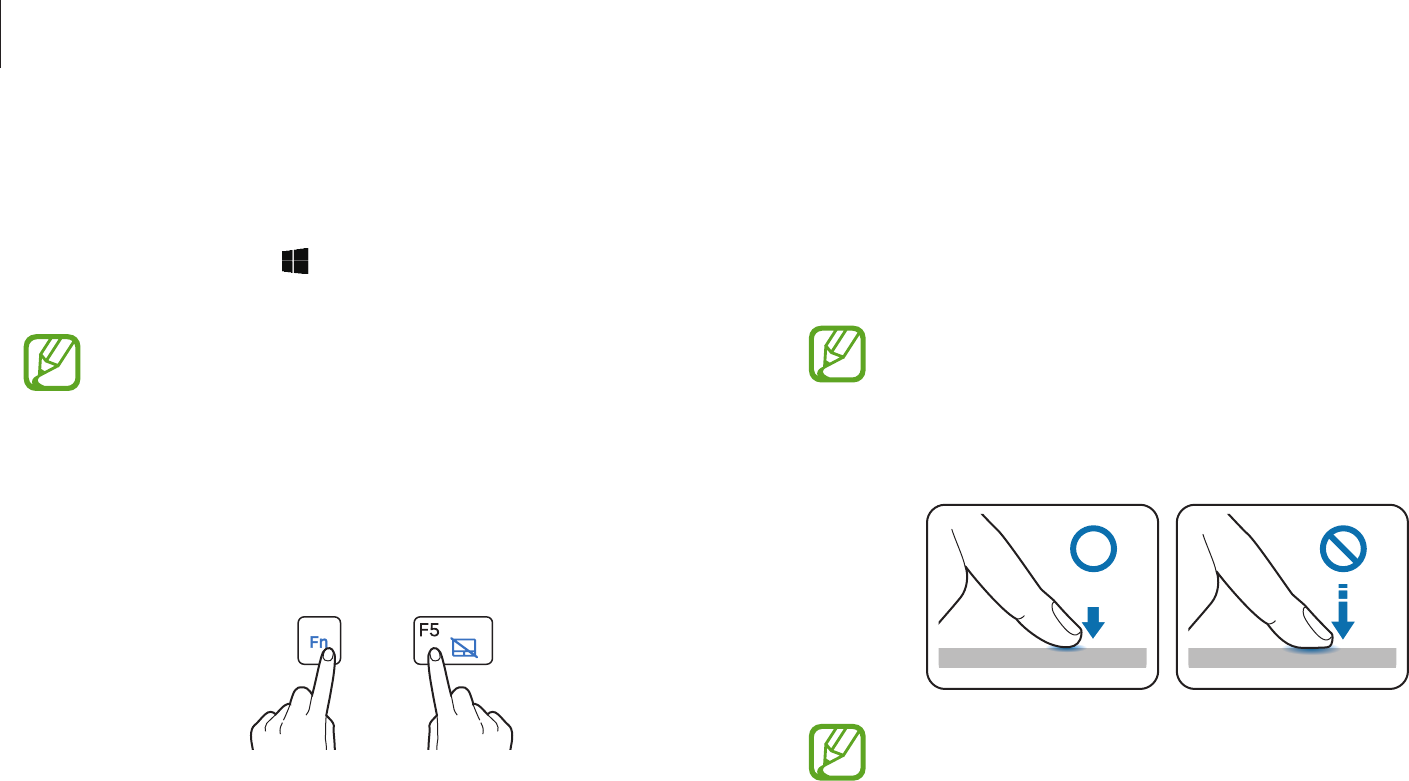
Basics
30
Press & Go gestures
Use Press & Go gestures on the touchpad to easily move to the
previous screen of the webpage or the folder, or go to the top or
bottom of the display with just one finger.
You can use only this feature in Internet Explorer, Microsoft
Edge, and Windows Explorer.
1 Tap the touchpad lightly.
When you want to use Press & Go gestures, tap the
touchpad lightly. If the contact area of the touchpad is
too wide or you tap the touchpad firmly, the Press & Go
gestures may not function properly.
Configuring touchpad gestures
Configure touchpad gestures to use the touchpad more efficiently.
Select the Start button ( )
→
Settings
→
Devices
→
Mouse &
touchpad
→
desired options.
Some options in the touchpad settings may not be
available depending on the model.
Touchpad lock
Press and hold the
Fn
key and press the
F5
key to lock the
touchpad.
+
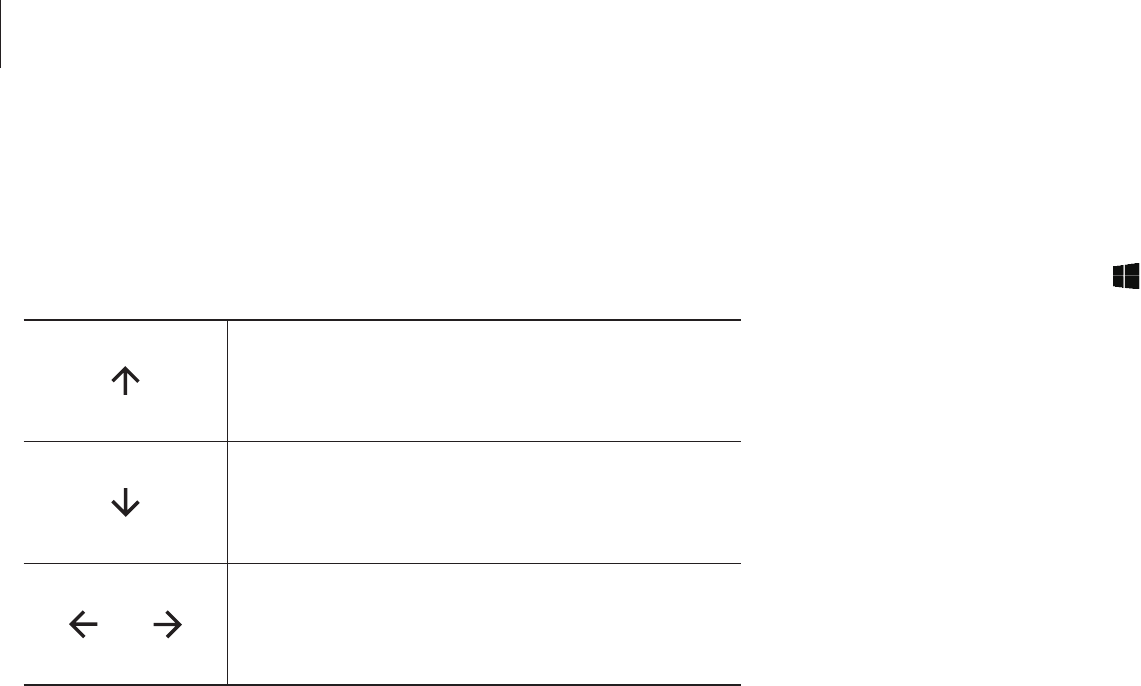
Basics
31
Deactivating Press & Go gestures
You can deactivate the Press & Go gestures on
Samsung Settings
.
1 Select the Start button ( )
→
All apps
→
Samsung
→
Samsung Settings
.
2 Select
Input
and set
Press & Go
to
Off
.
2 When the arrows appear on the screen, swipe your finger on
the touchpad in the direction you want.
The Press & Go gestures will act as described in the table
below.
Swipe your finger upwards.
You can go to the top of the webpage or the
files list of the current folder.
Swipe your finger downwards.
You can go to the bottom of the webpage
or the files list of the current folder.
Swipe your finger to the left or right.
You can go to the previous screen of the
webpage or the current folder.
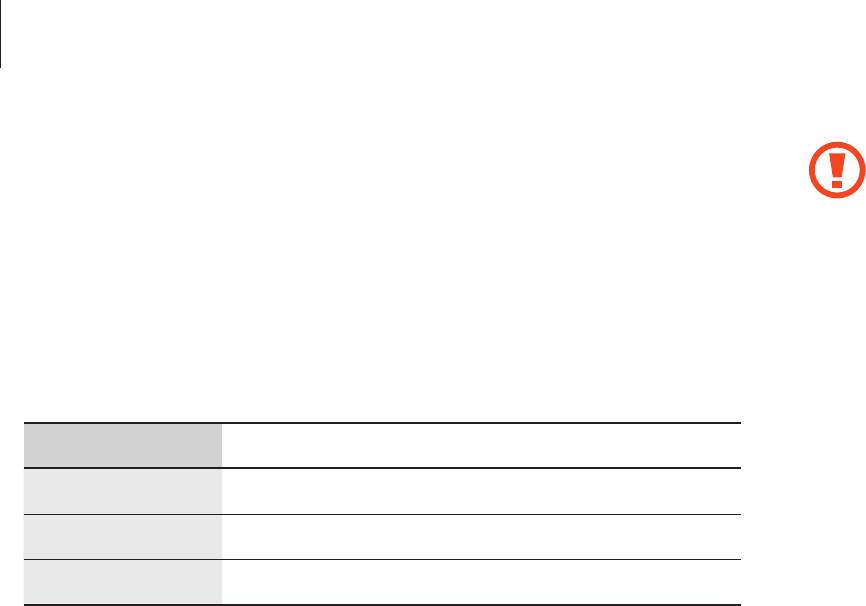
Basics
32
•
Some memory cards may not be fully compatible with
the computer. Using an incompatible card may damage
the computer or the memory card, or corrupt the data
stored in it.
•
Use caution to insert the memory card in the indicated
direction.
•
Store the card separately to prevent losing the card
when moving the computer.
•
Memory card speeds vary.
Memory card
Use a memory card to transfer data to other devices, such as
digital cameras or MP3 players. Memory cards are sold separately.
Purchase a memory card with the necessary capacity for the
requirement.
This computer supports the following types of memory cards.
Abbreviation Description
micro SD
•
micro Secure Digital
micro SDHC
•
micro Secure Digital High Capacity
micro SDXC
•
micro Secure Digital eXtended Capacity
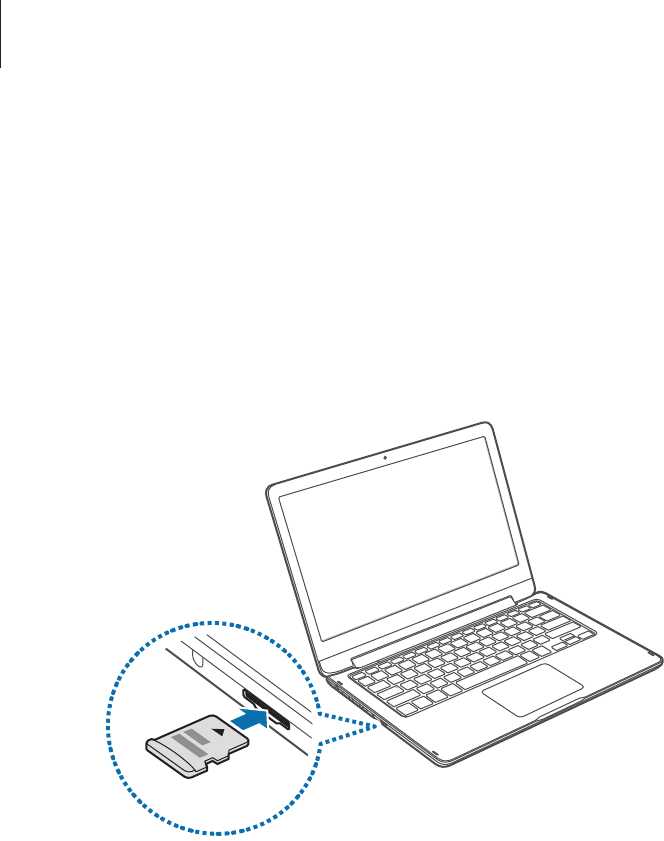
Basics
33
3 If a pop-up message appears, choose an action.
4 Select
Open folder to view files
.
5 Save, move, or delete data on the memory card.
The memory card folder opens only on the desktop.
Removing a memory card
Push the card gently until it disengages from the memory card
slot. Grasp the end of the card and pull it out of the slot.
Inserting a memory card
1 If a dummy card or a memory card adapter is inserted in the
memory card slot, remove it.
2 Insert a memory card into the memory card slot in the
indicated direction.
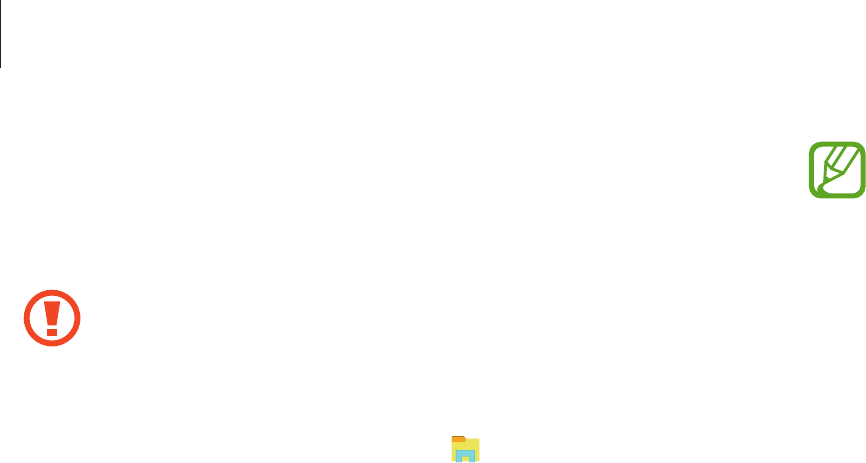
Basics
34
•
To use a memory card to exchange data with a digital
device, such as a digital camera, formatting the data
with the digital device is recommended.
•
When trying to use a formatted memory card in
another digital device, format the memory card again in
the device.
•
Data protected by copyright laws cannot be reviewed
or modified.
•
Inserting and removing a memory card repeatedly may
damage the memory card.
•
Secure Digital Input Output (SDIO) is not supported.
•
If the write-protect tab is in the locked position, you
cannot format, write, or delete data on the card.
Formatting a memory card
Format the memory card to remove all data or before using it for
the first time.
Formatting a memory card deletes all data saved on
the card. If necessary, back up important data before
formatting the card.
1 On the taskbar, select File Explorer ( ).
2 Right-click the memory card drive, and then select
Format
.
3 Select
Start
.
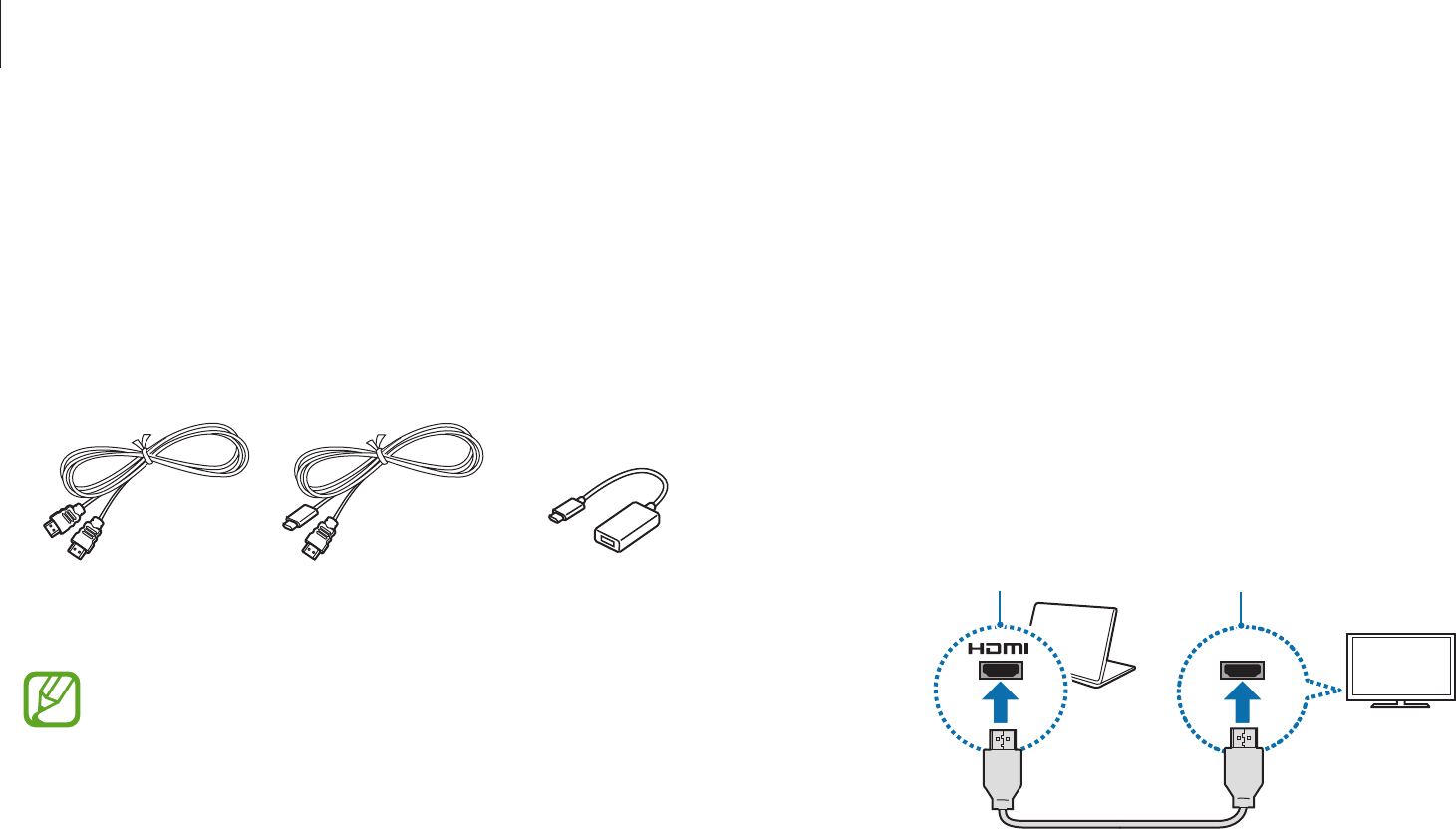
Basics
35
Connecting to a display
1 Connect the HDMI cable to the corresponding port of the
computer.
2 Connect the other end of the cable to the HDMI port of the
external display.
If the display has several HDMI ports, connect the cable to the
DVI IN port.
<When using an HDMI cable>
HDMI port HDMI port
External display
Connecting the computer to an external display device can be
useful for presentations or when watching a movie. The cables
and adapters required to connect an external display are sold
separately. The computer supports HDMI cables, USB-C™ display
cables, and USB-C™ display adapters.
HDMI cable USB-C™ display cable USB-C™ display
adapter
•
Check the available ports on the display device to
ensure that it is compatible with the computer.
•
An external display is not supported when using DOS or
the Command Prompt window.
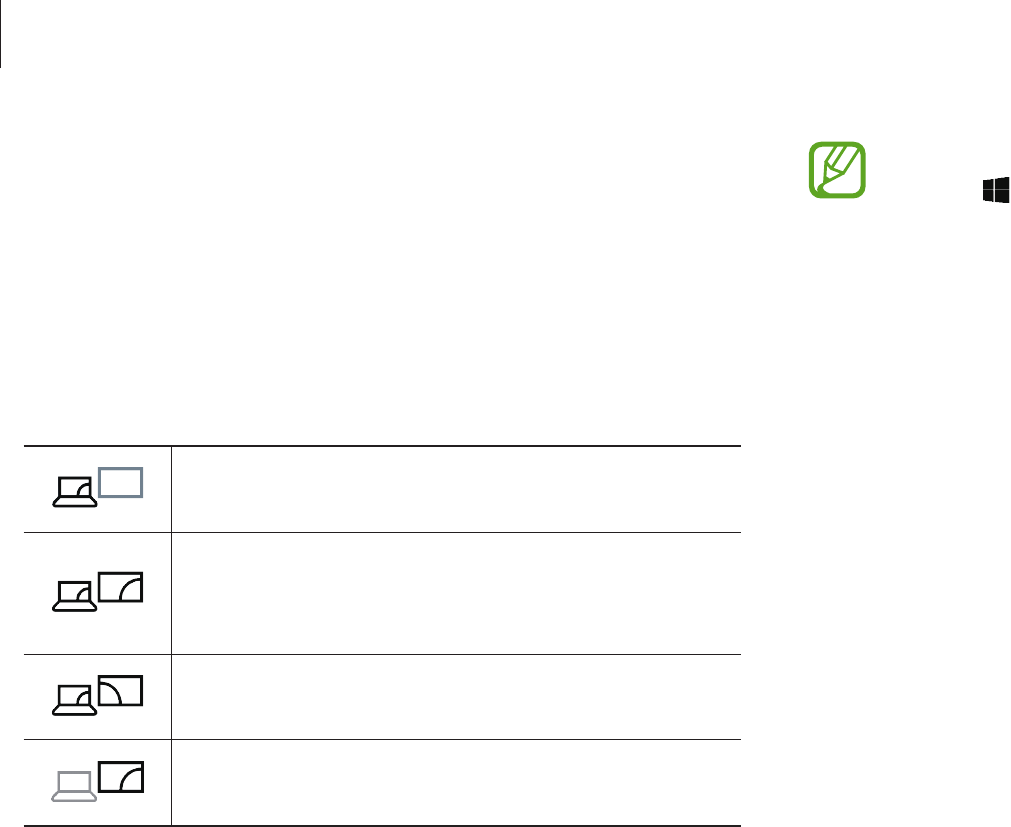
Basics
36
You can also select a mode by right-clicking the Start
button ( ) and selecting
Control Panel
→
Appearance
and Personalization
→
Display
→
Change display
settings
→
Multiple displays
→
an option. For more
information, refer to OS help.
3 Connect the power cord to the external display.
4 Turn on the display and change its display mode to one that
supports an external input.
5 Press and hold the
Fn
key and press the
F4
key.
6 Select a mode.
PC screen only
Show the screen on the computer monitor only.
Duplicate
Show the screen on both the computer and the
external display.
Extend
Extend the screen to the external display.
Second screen only
Show the screen on the external display only.
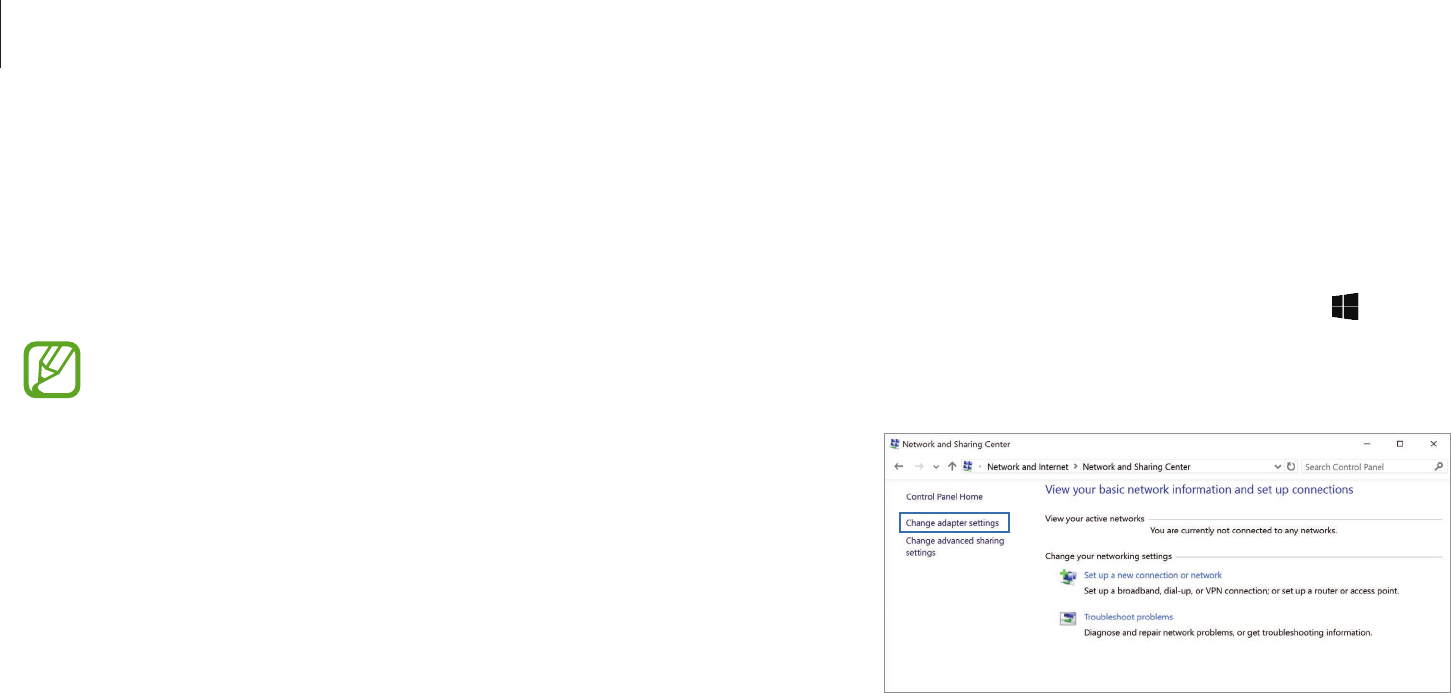
Basics
37
Wired LAN
1 Connect a LAN cable to the LAN port on the computer.
2 On the desktop, right-click the Start button ( ) and select
Control Panel
→
Network and Internet
→
Network and
Sharing Center
→
Change adapter settings
.
3 Right-click
Ethernet
and select
Properties
. The LAN device
name may differ depending on the computer’s network
device.
Wired LAN (For 15.6 inch models)
To access the Internet at home, set up an account with an Internet
service provider (ISP). To purchase Internet service and a modem,
contact a local ISP.
•
Some features or procedures may differ depending on
the model.
•
These descriptions are written for Windows 10, so some
figures and descriptions may differ from your operating
system. Since the procedures for other Windows
operating systems are similar, use the computer
referring to these descriptions.
